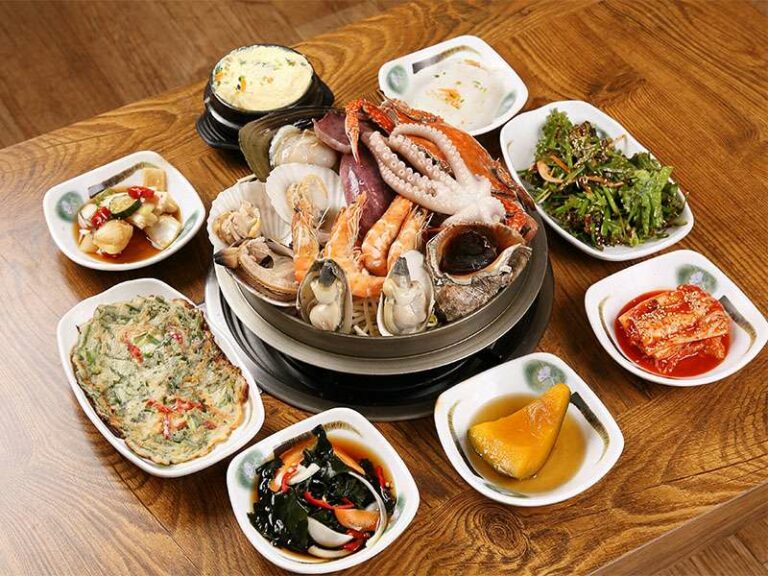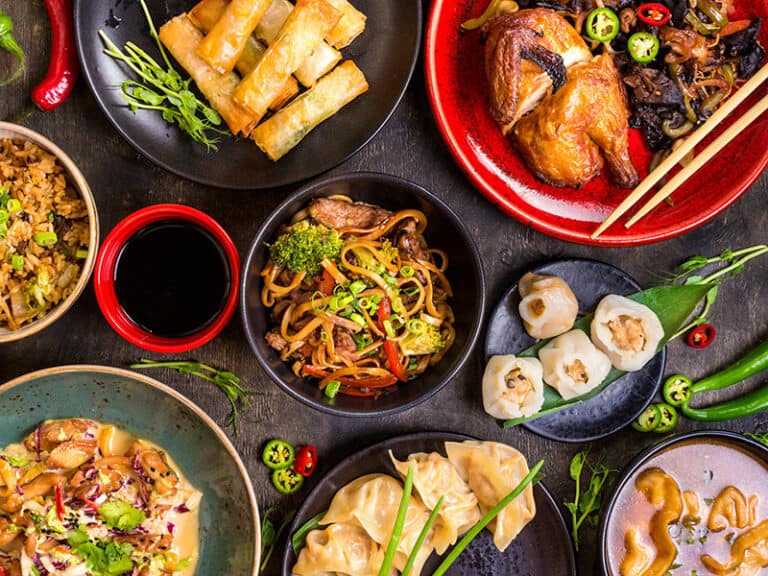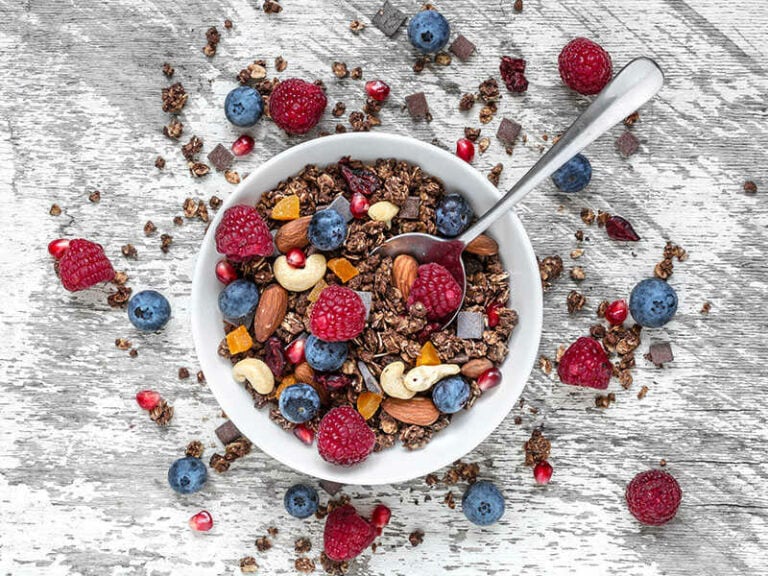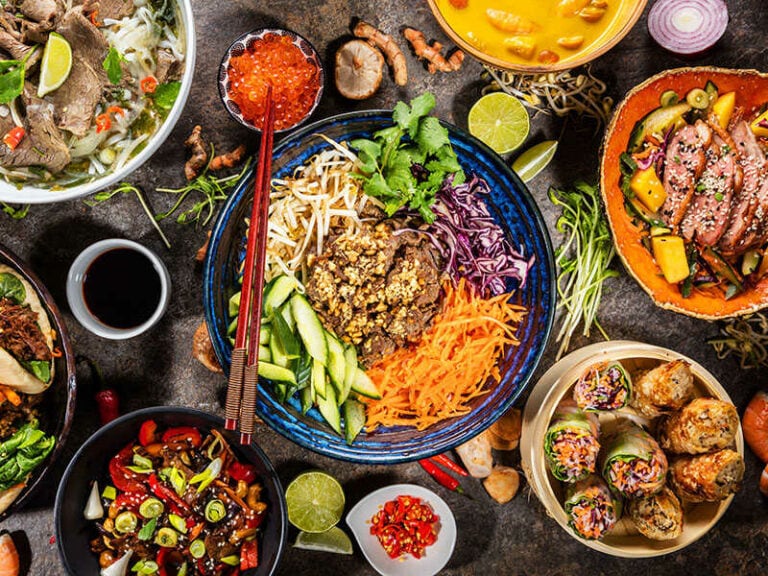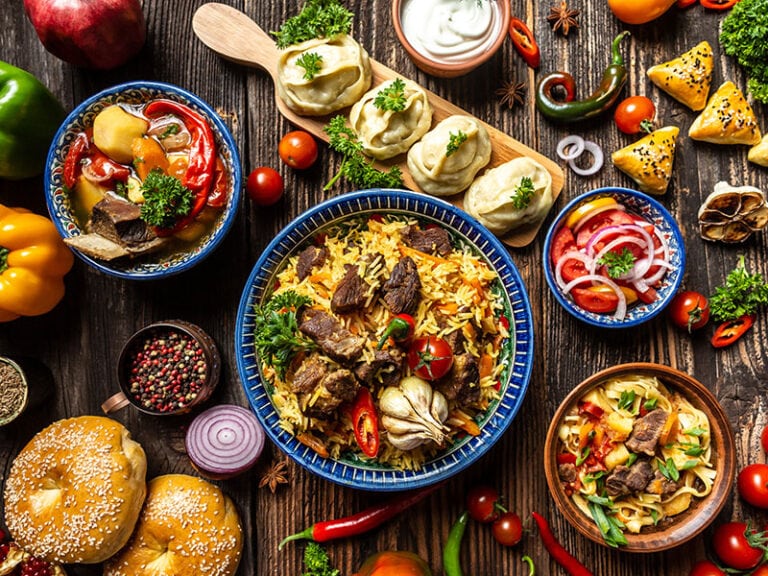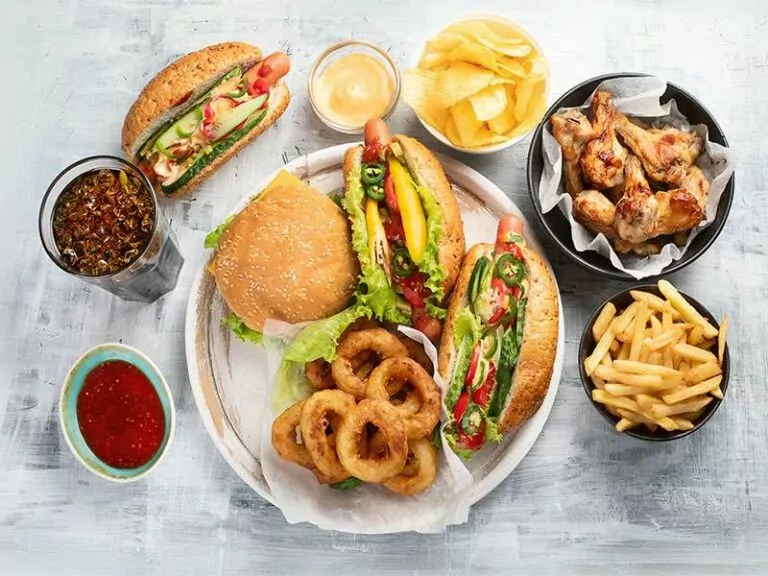Feeling a bit peckish and fancy something beginning with F? In this post, I’m going to introduce you to all exotic and tantalizing foods starting with this letter. They will make your taste buds dance and contribute to a healthier lifestyle.
Soon, you will have fresh ideas to impress your friends at your next dinner party and add more nutritious options to your daily diet. You can do all this by taking the simple action of continuing to read this post!

A Flavorful Voyage Through Fantastic Foods Beginning With F
Fruits
- Fig
- Fuji Apple
- Finger Lime
- Feijoa
- Fairchild Tangerine
- Fascell Mango
- Forest Strawberry
- Fox Grape
- Fe’i Banana
- Fukushu Kumquat
- Faerie Watermelon
- False Mastic Fruit
- False Jaboticaba
- False Pineapple
- Fazli Mango
- Fibrous Satinash Fruit
- Fiorentino Tomato
- Five-leaved Bramble Berry
- Flatwoods Plum
- Florentine Citron
- Florida Cherry
- Florida Strangler Fig
- Fony Baobab Fruit
- Fuji Cherry
- Fukushu Kumquat
- Fuyū Persimmon
Vegetables
- Fennel
- Flat Beans
- Fluted Pumpkin
- Fiddlehead
- Fat Hen
- French Sorrel
- Fairy Ring Mushrooms
- Fava Bean
- Feher Ozon Pepper
- Fennel Plant
- Fenugreek
- Field Blewit
- Field Peas
- Filius Blue Pepper
- Fioretto Cauliflower
- Fish Pepper
- Flat Cabbage
- Flat Italian Onions
- Flax Microgreens
- Flint Corn
- French Beans
- French Breakfast Radish
- French Purslane
- Friggitello
- Frisée
Snacks
- Fruit Salad
- Froot Loops
- Fondue
- French Fries
- Falafel
- Frankfurter
- Fajitas
- Fudge
- Fritters
- Fish Fingers
Breads And Desserts
- Flan
- Focaccia
- Fruitcake
- Funnel Cake
- Flatbread
Meat And Seafood
- Filet Mignon
- Fish
- Flounder
- Freshwater eel (unagi)
- Flathead Fish
- Fugu Fish
- Frog Legs
Main Dishes
- Farfalle
- Fettuccine Alfredo
- Frittata
- French Toast
- Fried Chicken
- French Onion Soup
Cheese
- Fontina cheese
- Fromage blanc
- Fromage frais
- Feta Cheese
Other
- Fusilli
Fruits
1. Fig
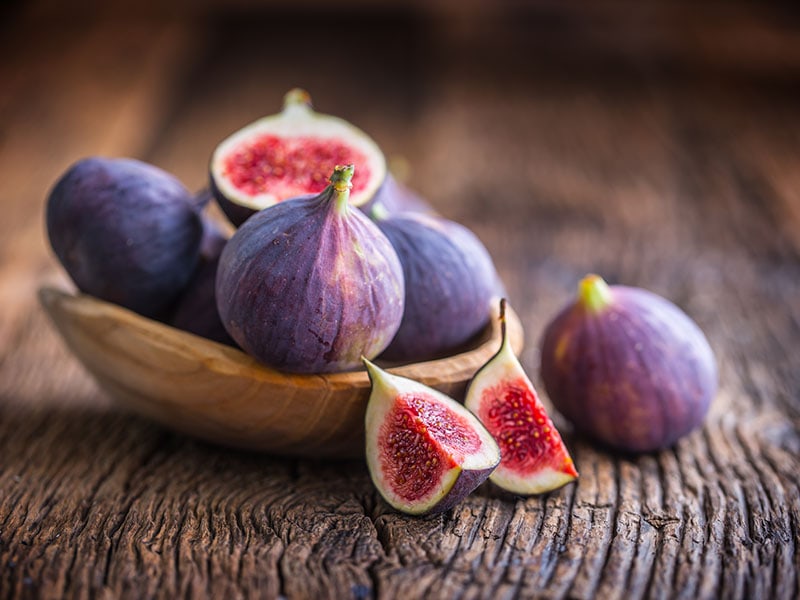
Figs are small, about 1 to 2 inches in length and weighing somewhere between 1.4 to 1.7 ounces) As they ripen, their green skin transforms into a lovely shade of purple or brown. Inside, you’ll discover a soft, pink flesh that is sweet and dotted with crunchy seeds.
These F-something fruits are more than just a tasty snack since they’re pretty low in calories but high in nutrients. They can support a healthy digestive system as well as maintain balanced blood sugar levels.
The best part? You can munch on every bit of a fig – it’s all edible! But here’s something to remember – don’t mix up figs with Indian fig fruits. Even though the two share a similar name, they are as different as chalk and cheese.
2. Fuji Apple
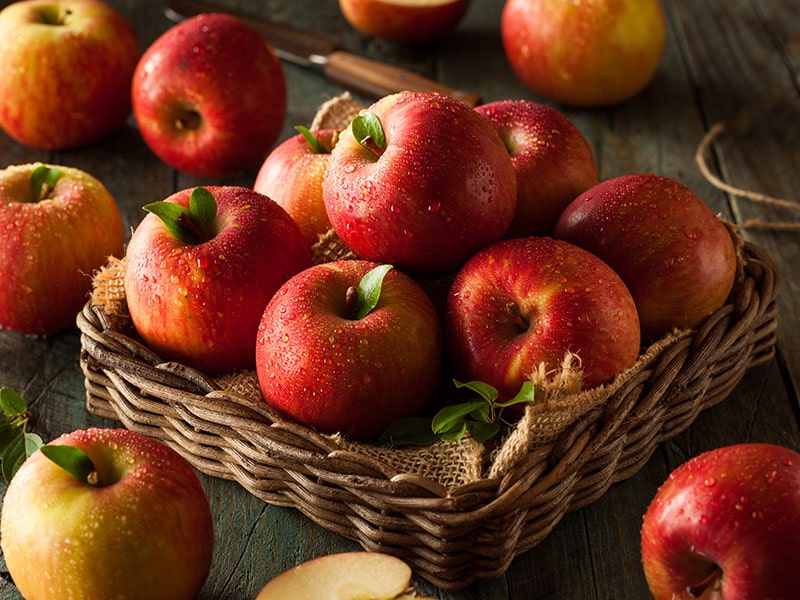
Created in Japan in the late 1930s, the Fuji variety is a delightful hybrid of two American apple breeds – the Red Delicious and the Virginia Ralls Janet. Its name came from Fujisaki, the town where this apple was first grown.
Today, this type of exceptionally sweet and crisp apple sits comfortably among the top three apple varieties in the United States, outshone only by the Red Delicious and Gala apples. It’s not just Americans who love these apples. You can find them in Australia, China, and Canada.
Fuji apples aren’t just about the taste. Each medium-sized fruit, about 2 to 3 inches in diameter, is a treasure trove of vitamins and minerals. They’re especially rich in vitamin C and beneficial to your immune system.
In addition, they also have a high concentration of quercetin, a substance known to reduce the risks of heart attacks.
3. Finger Lime
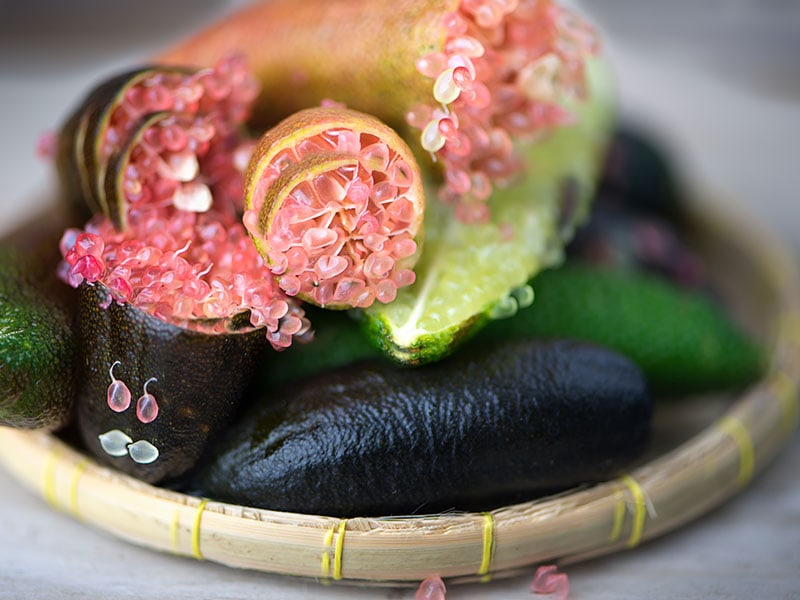
If you live in Australia, you may already have heard about finger lime, which is exclusively found in South East Queensland and Northern New South Wales.
Their skins are varied colors, such as pink, purple, yellow, dark/light green, dark brown, and black. The fruits have a long shape, around 2 to 2.5 inches long, with a small taper at the ends.
Their caviar-like flesh is full of sweet and juicy pearls, which come in various colors like white, light green, yellow, and purple. Have a bite, and the flavor of citrusy, acidic notes with a hint of bitterness will dance on your palate, while the grapefruit-like aroma will captivate your senses.
This fruit is rich in vitamin C and E, which enhance your overall health, even your skin, and your eyes. It can also be served raw or cooked as finger limes can be a great idea for decorating salads or pairing with seafood.
4. Feijoa
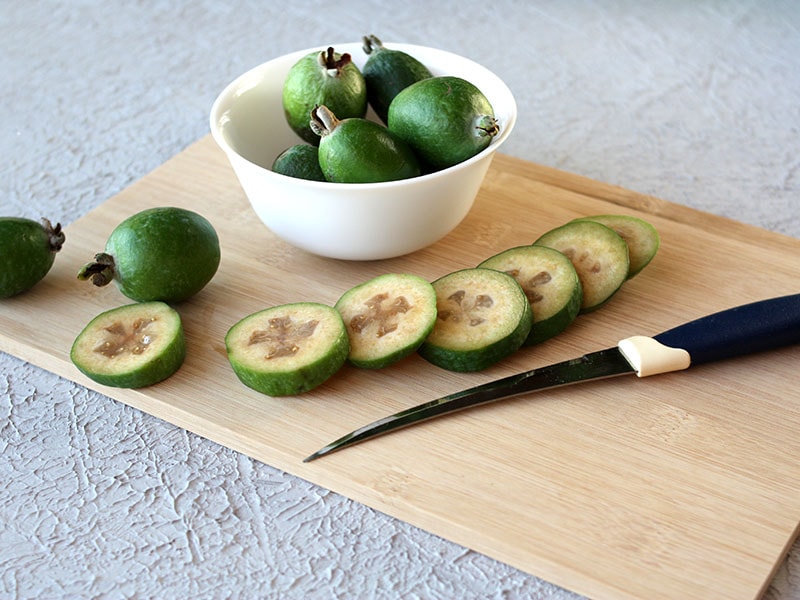
Feijoa is a fruit native to Brazil’s highlands, as well as Colombia, Paraguay, Uruguay, Argentina, and parts of Australia. While its creamy flesh is very sweet, the skin has a sour flavor. It is a great package of vitamins and minerals for everyone.
Blending the taste of strawberries, guavas, and pineapples in each bite, this fruit is shaped like an egg, with a modest size and green skin. If you have not seen them before, just imagine it looks quite like an avocado with the white inside of a cucumber.
5. Fairchild Tangerine
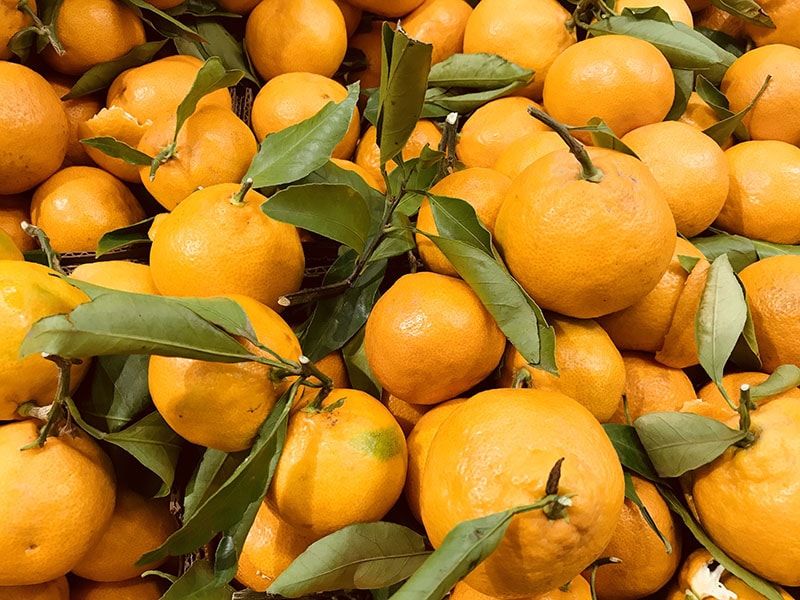
Fairchild tangerines are a variety of mandarin and a hybrid of Clementine mandarin and Orlando tangelo. They are a common sight in California orchards.
An early bird among citrus fruits, Fairchild tangerines ripen ahead of their peers. Although they might challenge your patience with their thin and not-so-easy-to-peel skin and medium size (about 2.3 inches in diameter), their juicy, sweet flesh is well worth the effort.
This fruit is full of vitamins C and A, fiber, and other minerals like calcium, magnesium, and potassium. You can eat it raw or juice it. Its skins can be used to garnish beverages, pastries, and desserts.
6. Fascell Mango
A staple of Southern Florida, Fascell mango is a tribute to Micheal Fascell, the man who first planted it back in 1929. With an outer layer boasting a blend of yellow and red, these mangoes can vary from an oval to a heart shape.
But what is really special lies inside. The sweet, fiber-less flesh owes its unique taste to its parentage – the Haden and Brooks mangoes. Firm, juicy, and simply delicious – that’s the Fascell mango in a nutshell!
7. Forest Strawberry
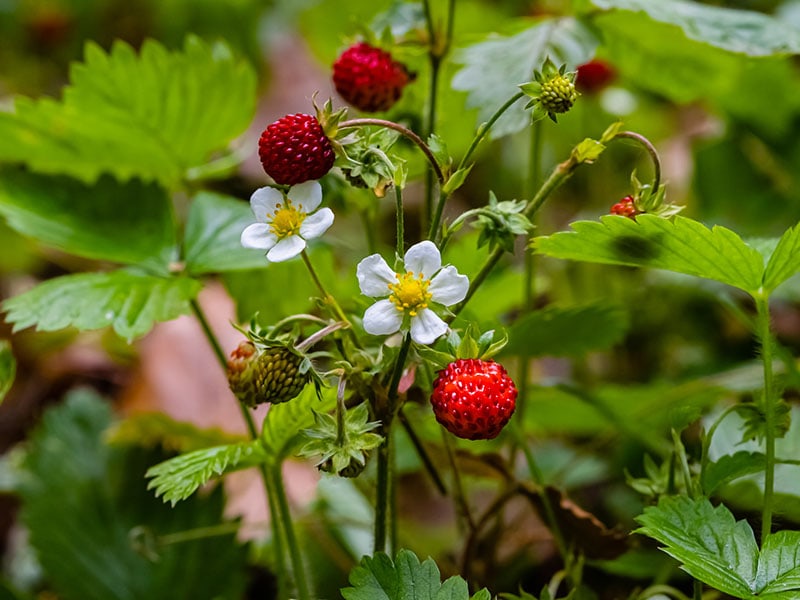
Just like the name, forest strawberries are found in the wild, especially in the Northern Hemisphere. They have other names as woodland strawberry or alpine strawberry.
They are smaller than other strawberries but much more aromatic. Their flesh combines a profound sweetness with a subtle hint of acidity. But forest strawberries have a short shelf life and are harder to find than common strawberries, so obtaining them can be a challenge.
8. Fox Grape
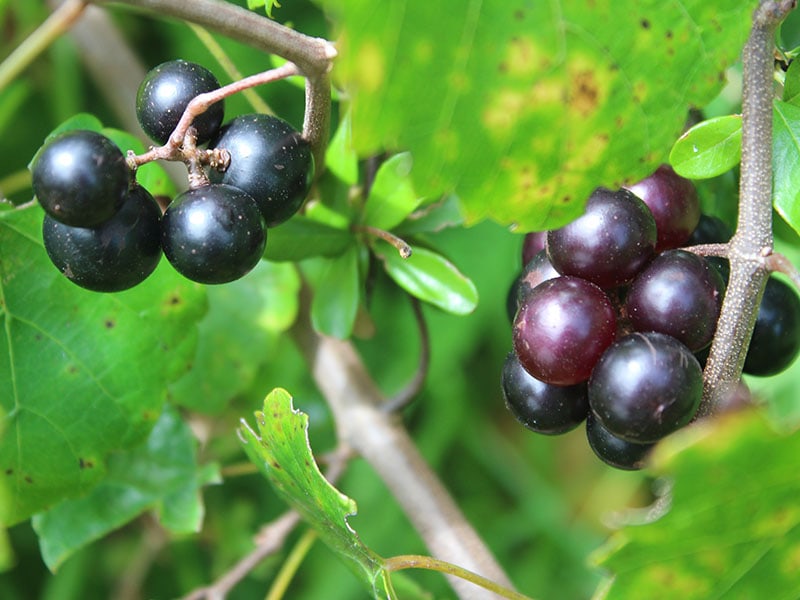
Fox grapes are native to the wilds of North America and can be unpredictably sweet or sour in flavor. What is predictable is that their aroma is a unique cocktail of sweet, earthy, and musky notes, earning them the “foxy” descriptor.
The fruits have a blue-black color and juicy flesh with many small seeds. They can be eaten raw, dried, or made into juice. Their health benefits include improving brain function, strengthening bone health, and supporting heart health.
This wild grape variety also plays a crucial role in the ecosystem, offering tasty treats for foxes, possums, birds, and providing hideouts with their dense vines (another reason for its fox-related name). So, when you’re out picking these fruits, try not to disturb these furry and feathered friends.
9. Fe’i Banana
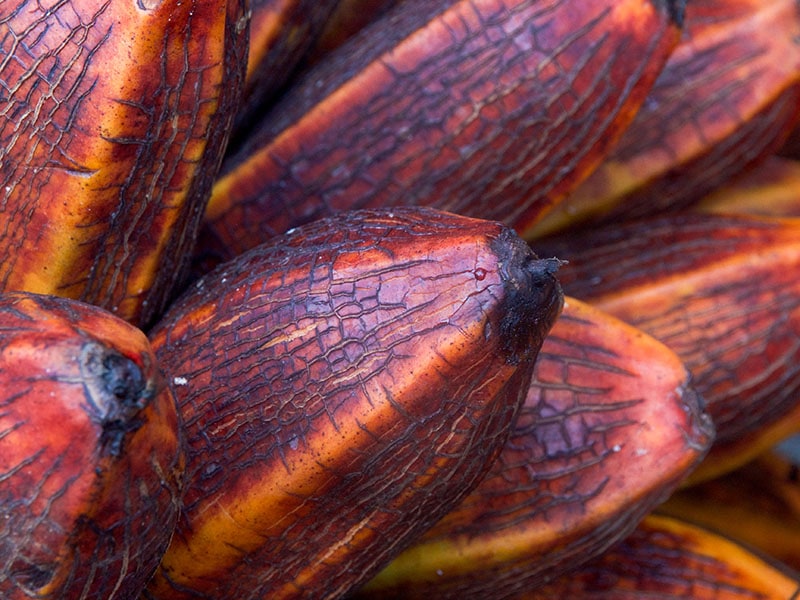
Though a rare sight in most markets, this banana variety is a unique treasure from the Pacific Islands and New Guinea. Much like plantains, they should be boiled or roasted rather than eaten raw to bring about a perfectly tender texture and sweet flavor.
Don’t be put off by their unusual appearance, with the orange and red peel or yellow and orange flesh. These bananas are beta-carotene goldmines! Although they’re not a commercial crop, if you ever come across these, they’re worth a try.
10. Fukushu Kumquat
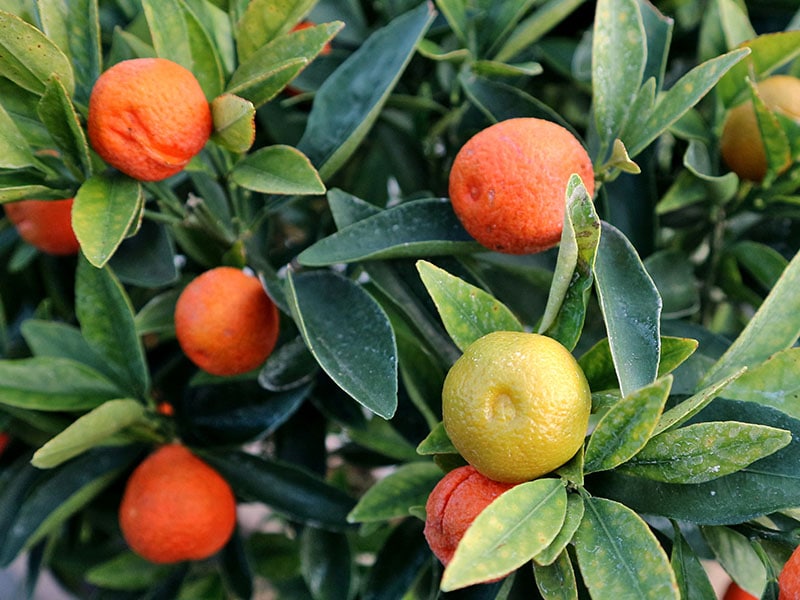
Hailing from Japan, these sweet-and-bitter, larger-than-usual kumquats not only have medicinal benefits but also make for sweet candied treats. Picture it simmering away in syrup to make a dessert for the Chinese New Year. Or how about it adding a sweet punch to your salads and savory dishes?
These fruits have a beautiful orange color and a refreshingly floral fragrance. This feature, along with the tree’s hardiness and compact size makes Fukushu kumquats an attractive choice for ornamental uses.
11. Faerie Watermelon
This one is a hybrid miniature watermelon that fits snugly in your palms. It is about 7 – 8 inches long and weighs between 4 and 6 pounds. Its oblong shape is something, but the real showstopper is the canary yellow rind decorated with thin stripes.
Once you slice into it, the surprise continues with the orange-red, crisp flesh with a high sugar content.
12. False Mastic Fruit

False mastic fruit (Sideroxylon foetidissimum) is also known as yellow mastic. The tree is a familiar sight in Florida, Central America, and the Caribbean, often sought after for its shade. Despite reaching impressive heights of 80 feet, the olive-shaped fruits it bears are petite.
Their vibrant orange and yellow hues are an eye-catcher, and a sweet, nutty flavor hides within the gummy pulp. Just remember that the cheesy smell exuding from the flowers may be a little unpleasant.
13. False Jaboticaba
How about getting acquainted with the false jaboticaba, or Myrciaria vexator? It’s a relative of guavas and hails from Latin America. Its fleshy fruits are about the size of a plum, showcasing a dark, purplish-blue hue that earns it the nickname ‘blue grape tree’.
Each fruit may have one or two large seeds, and a burst of sweet and citrusy flavor awaits beneath its thick skin. Most folks prefer to eat these fruits raw.
14. False Pineapple
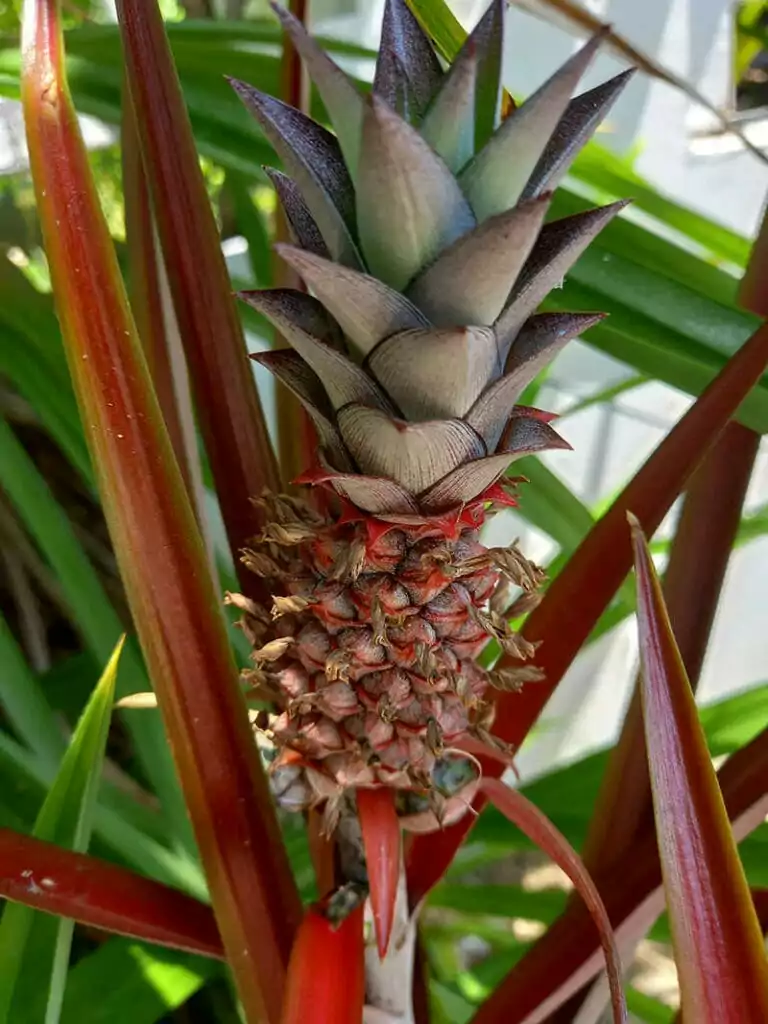
This tropical plant is scientifically known as Ananas macrodontes. It is a relative of the pineapple. Originating in Latin America, it exhibits more hardiness than its famous cousin. But what makes it special is its single red, eye-catching fruit.
While you can eat it, the fruit’s fibrous texture leaves much to be desired. Instead, people love it as an ornamental piece. They often plant false pineapples in pots as a houseplant.
15. Fazli Mango
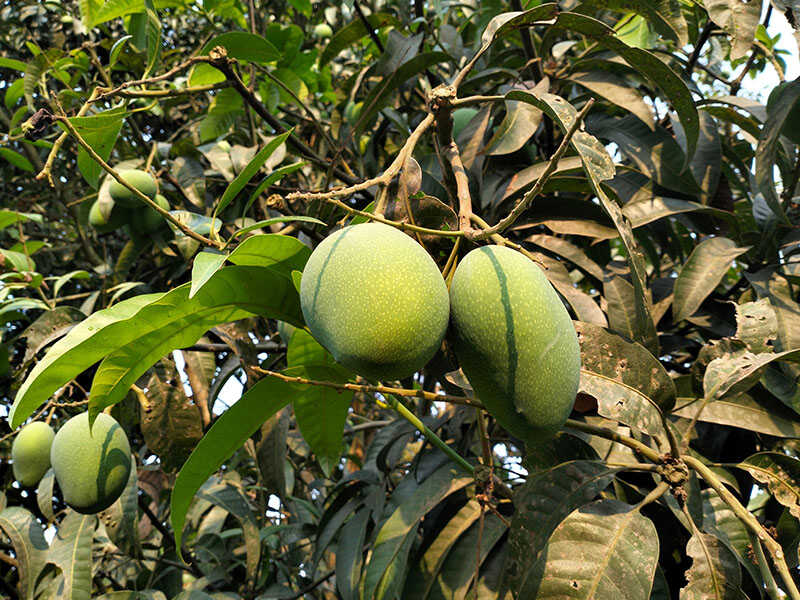
This luscious fruit calls West Bengal and Bangladesh home. As one of Bangladesh’s tastiest exports, it has the Rajshahi Division as its prime hub.
A late bloomer, Fazli mangoes ripen later than most. Once ripe, each fruit boasts light-yellow skin and can weigh a hefty 1.5 to 2 pounds. Bite into its firm, juicy flesh, and you will feel a satisfyingly sweet flavor.
16. Fibrous Satinash Fruit
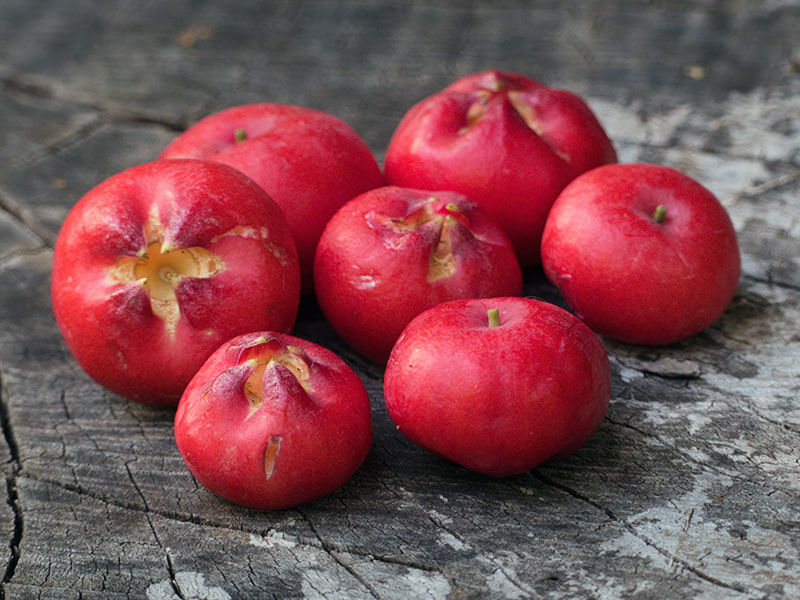
In the rainforests of Australia, Indonesia, and Papua New Guinea, lives the fibrous satinash fruit, whose scientific name is Syzygium fibrosum. It is in the Myrtle family, like guavas and false jaboticabas.
These small, ruby-red fruits pack a sour punch, which is why locals usually transform them into sweet jams, candies, and pastries.
17. Fiorentino Tomato
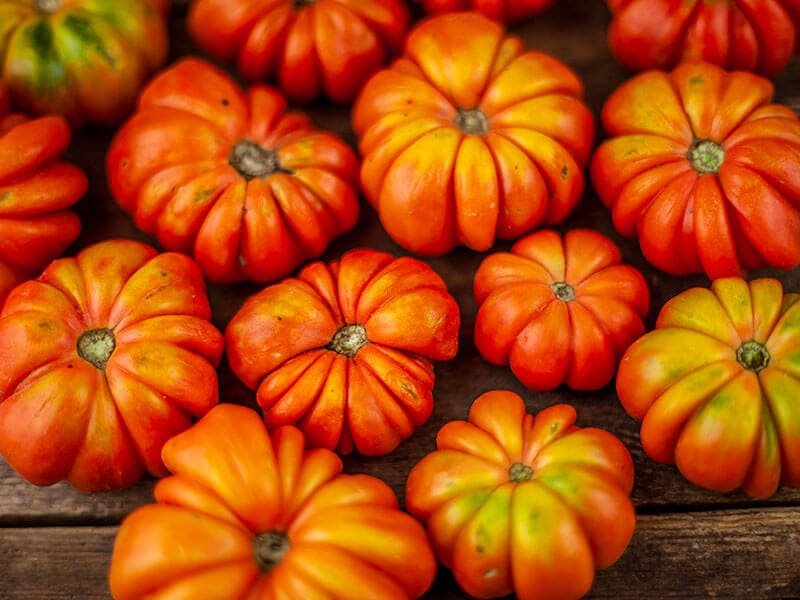
Fiorentino tomato (or Costoluto Fiorentino for the full name) is an heirloom beefsteak variety with a radiant red shade from Florence, Italy. It is well-known for being heavily ribbed and pleasantly sweet with a touch of acidity.
Unlike its cousin, the Costoluto Genovese, this sweet tomato variety is meaty and not very watery. Whether you’re slicing it, slowly roasting it, or transforming it into a rich sauce, this tomato is a culinary star.
18. Five-Leaved Bramble
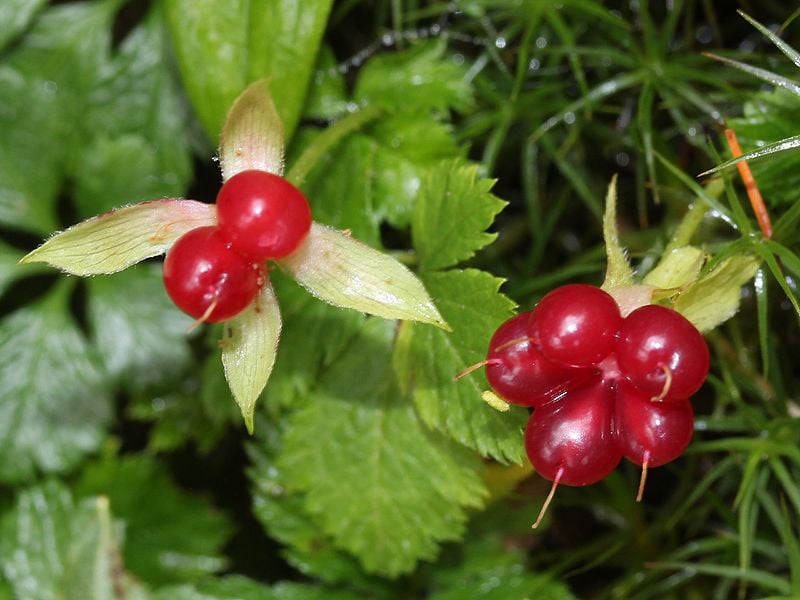
You might stumble upon this type of raspberry in the mossy forests, bogs, and streambanks of Asia and North America. With the scientific name of Rubus pedatus, it is also called creeping raspberry or strawberryleaf raspberry, a charming name that reflects its character.
Despite its small and soft fruits, which aren’t suitable for long-term storage, their delicious raspberry-like flavor is to die for.
19. Flatwoods Plum
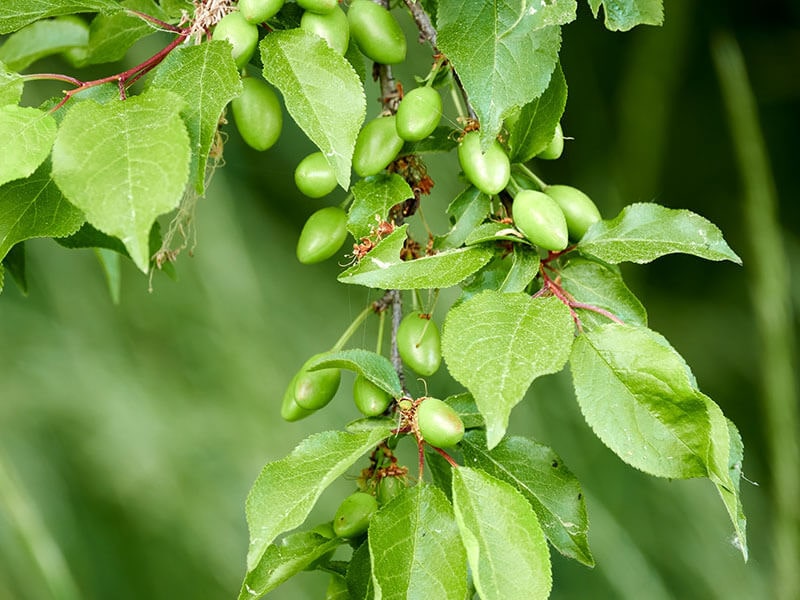
Prunus umbellata, better known as the flatwoods plum, is a treat for the eyes and the palate. Its delicate, small purple plums (0.5 – 1 inch in length) range from tart to sweet in flavor. Native to various regions in the US, this plum variety also goes by names like sloe plum or hog plum.
While its trees are a favorite for landscaping, remember they do have sharp thorns, so have a little caution for the curious children who might be drawn in by the flavorful fruit.
20. Florentine Citron
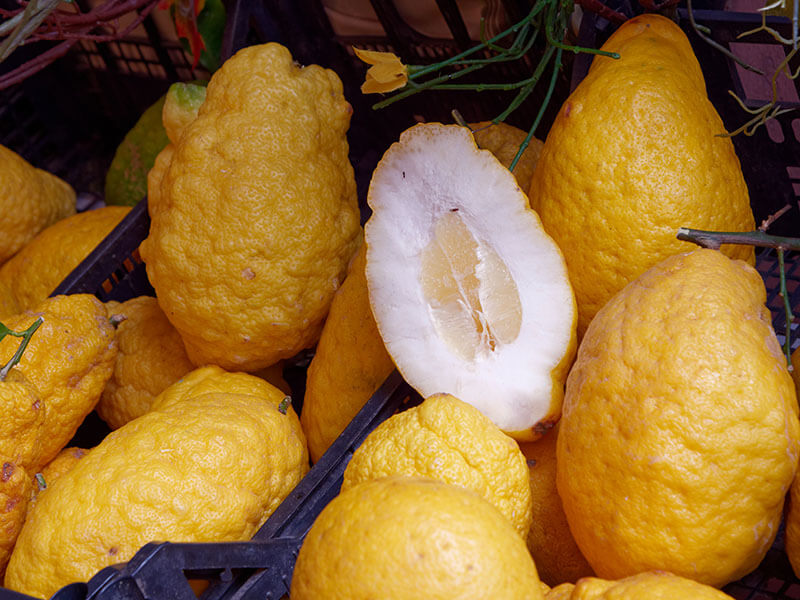
This fragrant citron was probably bred in Florence in the 17th century or earlier. It is a citrus sensation with an unforgettable aroma. Its skin, thick and textured with bumps, gives it an artistically rustic look befitting the elegant gardens of its birthplace.
This beautiful yellow fruit always grows in clusters. Inside, it promises a robust lemony flavor, an assertive taste that can liven up any dish.
21. Florida Cherry
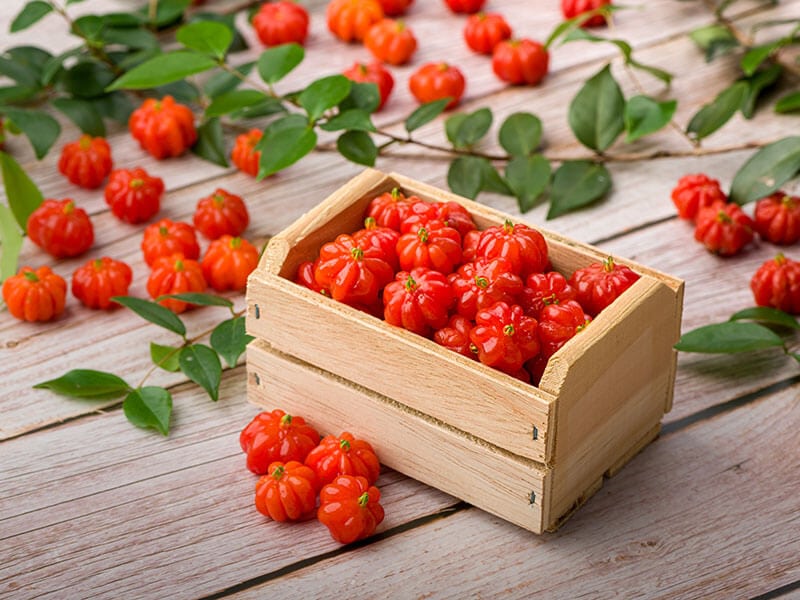
Known to experts as Eugenia uniflora, Florida cherry originates from South America but has found a home in Florida where typical cherries struggle. It is a fantastic choice for hedges and produces vitamin-rich, gourd-shaped fruits, whose flavor dances between sweet and tart.
You can guess what it will be by looking at the sashes, which include red, orange, and green. The red ones are the sweetest, while the others carry a tangy punch. Enjoy them raw, or transform them into your favorite jellies, pastries, and syrups.
22. Florida Strangler Fig
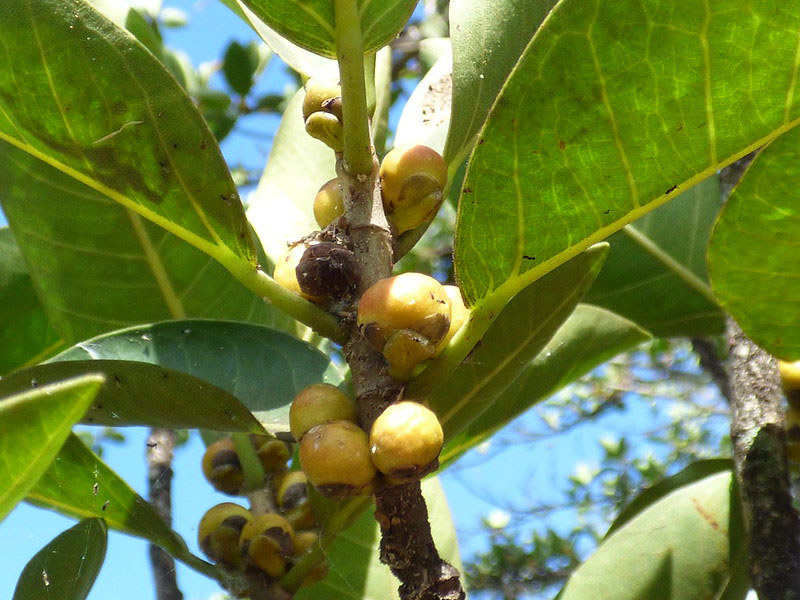
The Florida strangler fig (Ficus aurea) is an intriguing tale of survival and transformation. Its story unfolds in Florida, the Caribbean, and Central America. This tree begins its journey by embracing a host tree by wrapping its roots and trunk around the host.
Then, it slowly suffocates the host with a foliage blanket until standing free and alone. Still, some scientists suggest that the plant may be beneficial to the host by helping it withstand tropical storms, so there may be more to this macabre tale than meets the eye.
The vibrant yellow figs, with their somewhat bland or bitter flavor, are a sought-after meal for birds and small animals who might also inhabit the tree’s hollow core. But they aren’t the only residents; folklore has it that the trees also provide shelter to spirits and fairies!
23. Fuji Cherry

In the regions surrounding Mount Fuji, the Fuji cherry stands as a testament to resilience. This cold-hardy tree gracefully endures many kinds of weather, with different heat and humidity conditions.
Its allure lies not in its sour fruits but in the white and pink flowers that release a sweet almond scent, making it a favorite for ornamental purposes. These gorgeous blossoms also serve as a magnet for birds and insects. Still, you can turn the cherries into jams or condiments and enjoy.
24. Fuyu Persimmon
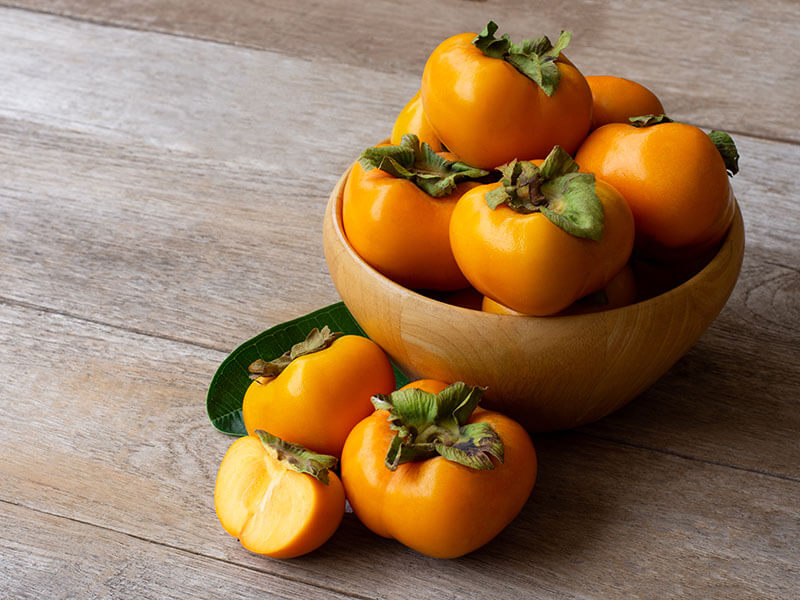
Fuyu persimmons are a hit in America, standing tall alongside the sweet Hachiya variety. They are entirely free of tannins and blessedly lack the dry, astringent taste that curses many persimmon varieties.
Their sweetness rivals that of Hachiya persimmons, with an added bonus of a mellow, apple-like flavor with a spicy twist. They offer that apple-like crunch, too. Looking at them, you might think of tomatoes, given their similar shape.
They’re perfect for a fresh, raw bite or to improve your cheese board since they pair beautifully with soft, creamy cheeses.
Vegetables
25. Fennel
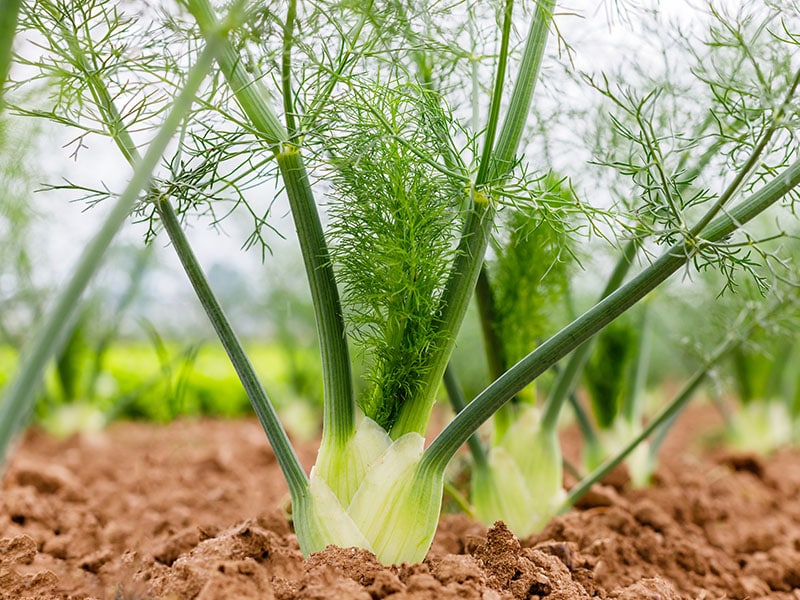
This layered, bulbous vegetable belongs to the carrot family. You can find it anywhere in the world, especially on dry soils. The stalks of the fennel are robust and firm, with golden blooms and feathery leaves. You can eat the fiber- and mineral-rich bulb raw or cooked.
Fennel has a pleasing anise-like flavor. Even without sugar, it manages to retain a sweet touch, which becomes even more prominent when cooked. Its seeds are used as a spice and are an essential component of Chinese five-spice powder.
26. Flat Beans
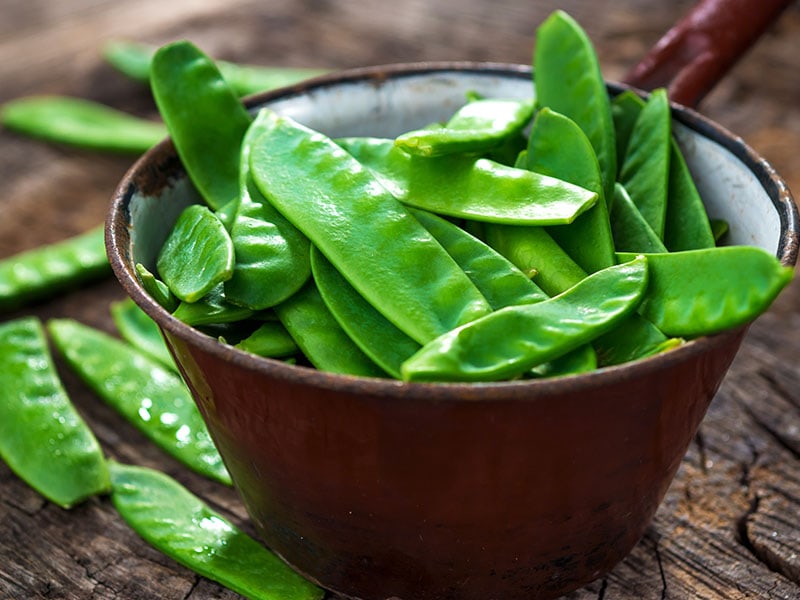
Going by other names such as helda or romano beans, flat beans aren’t just any ordinary legume. They are a unique variety of runner beans, with a bigger, wider size than your average green beans. Once cooked, their tender texture is something to savor.
These beans are versatile in the kitchen, with the ability to be prepared in multiple ways. Even the seeds inside can be de-husked, dried, and stored for later use.
But the real wonder lies in their nutritional benefits. Considered one of the healthiest beans, they’re chock-full of vitamins A, B, C, and K, proteins, and dietary fiber. These nutritional powerhouses can help bolster your immune system, manage sugar levels, improve eyesight, etc.
27. Fluted Pumpkin
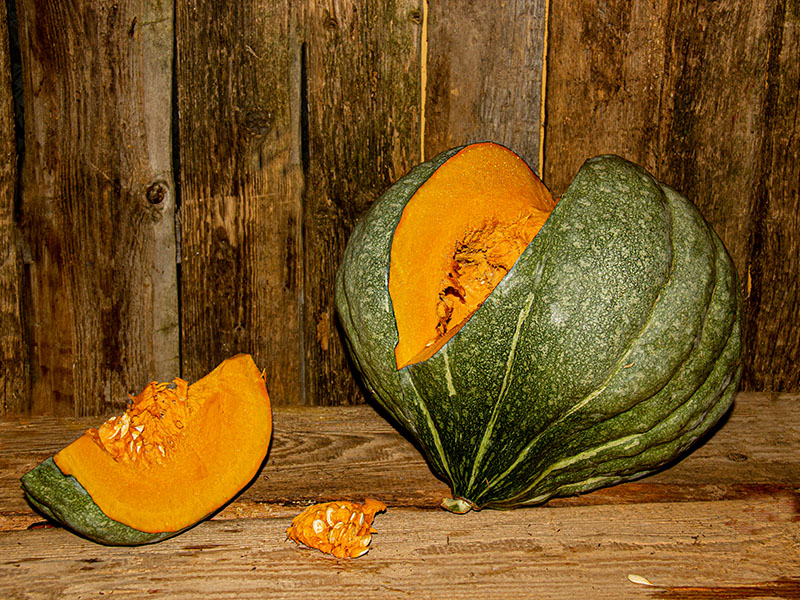
Fluted pumpkin, or Telfairia occidentalis as scientists call it, grows abundantly in West Africa. While the fruit itself isn’t for eating, the leaves make a tasty vegetable, and the seeds are totally edible, too.
These high-protein seeds can be boiled, fermented, or even eaten raw. Grounded seeds from this pumpkin play a starring role in some African dishes, such as a hearty soup or a comforting porridge.
28. Fiddlehead
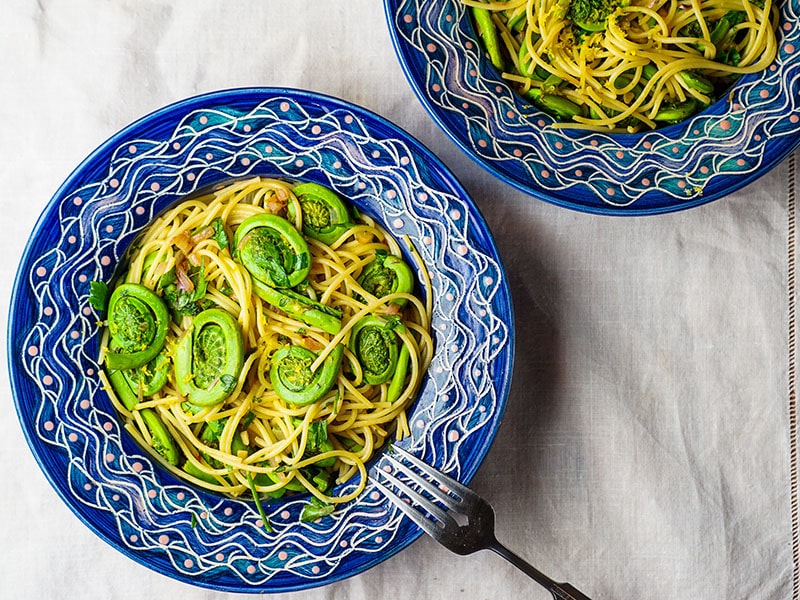
Fiddleheads are the fronds of fern trees. They have a short season and are considered a type of pricy and gourmet vegetable found in many countries, from Asia to Europe. Their whimsical name comes from their resemblance to the scroll of a fiddle (a violin).
The tastiest types are the ostrich fern (Matteuccia struthiopteris) and lady fern (Athyrium filix-femina). These greens carry a unique, delicate, grassy, and snappy flavor that is a little like mixing broccoli and asparagus. But here’s the catch – they’re not meant to be eaten raw.
They need a thorough washing and a good steaming until tender. Why all this fuss? Well, they can contain toxins if undercooked. But don’t worry, when prepared correctly, fiddleheads are a superfood, full of antioxidants, fiber, vitamins, and minerals (1).
29. Fat Hen
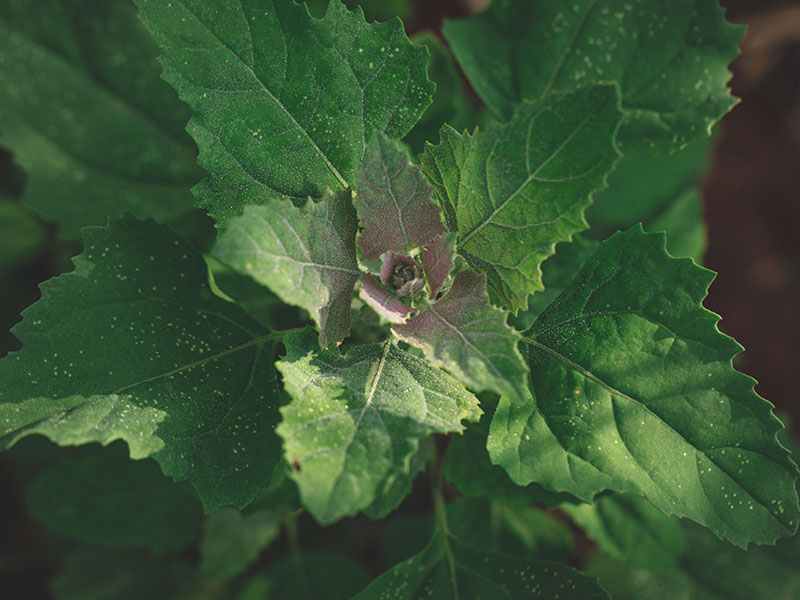
Despite its name, fat hen isn’t a plump poultry but a bushy herb, sometimes known as wild spinach or goosefoot. Though often dismissed as a weed, it is actually a wild vegetable hiding in plain sight.
Except for the root, most parts of the fat hen can be eaten. Because it is in the same family as spinach, you should cook it the same way. The flavor is also similar, with some notes of cabbage.
Its edible seeds have a flavor akin to quinoa grains, although the outer coating must be removed first. Just keep in mind that fat hen is high in oxalic acid, so don’t go overboard, or you might end up with a stomach ache (2).
30. French Sorrel
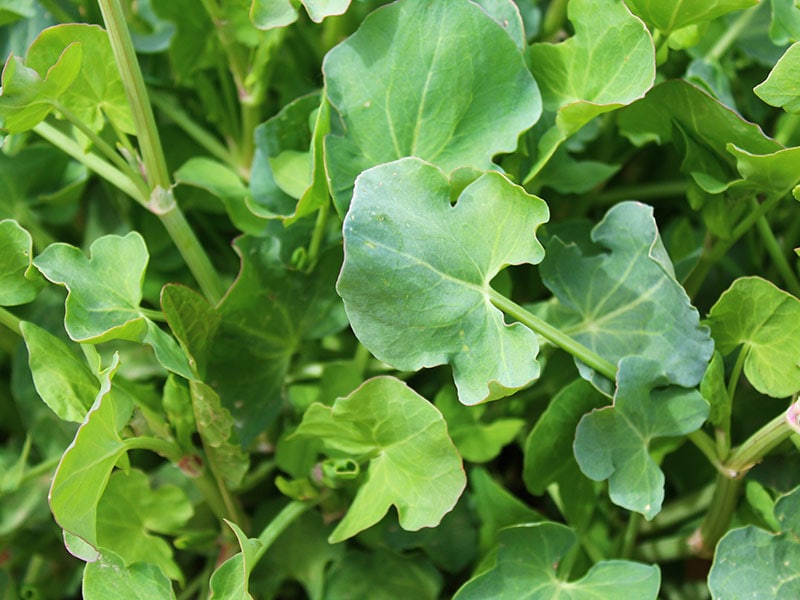
This culinary herb can add a lemony kick to many salad dishes thanks to its succulent, slightly round-and-long shaped leaves. Young leaves have a sour flavor that marries well with rich dishes like meats or fatty fish, elevating the taste of the entire meal.
French sorrel also makes a delightful pairing with dishes like spaghetti. However, because of its high acid content, you should keep the herb away from metal cookware to prevent erosion.
31. Fairy Ring Mushrooms
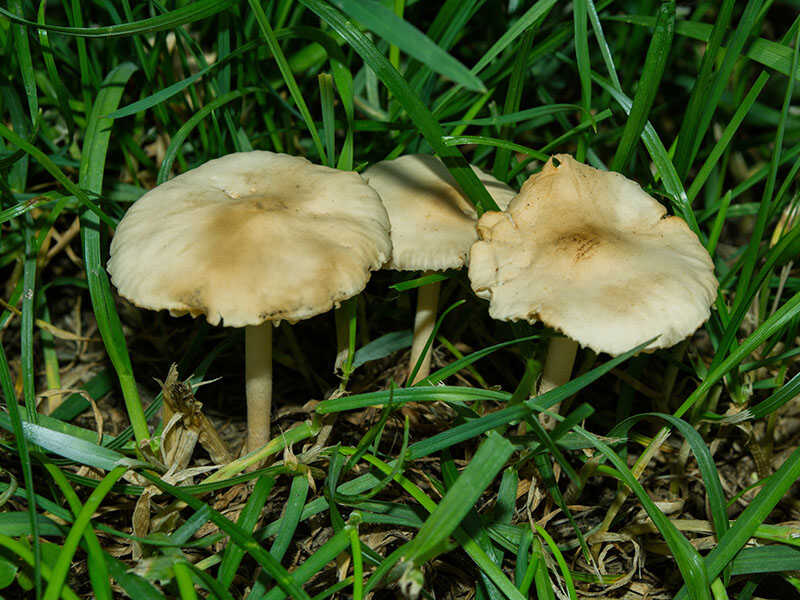
Fairy ring mushrooms, scientifically known as Marasmius oreades, love to pop up in grassy areas across North America and Europe. If you’re in a warm area, they’re a year-round guest, but in colder climates, they tend to make their appearance from summer to fall.
Despite what the name might suggest, these mushrooms don’t hold a monopoly on fairy rings. You can add these umami-rich morsels as a fantastic addition to stews, soups, and even baked goods.
But beware, they’re not pet-friendly and can be confused with some poisonous varieties. You can identify this kind of mushroom by its knobbed cap (whose color ranges from tan to reddish-brown) and off-white gills.
32. Fava Bean
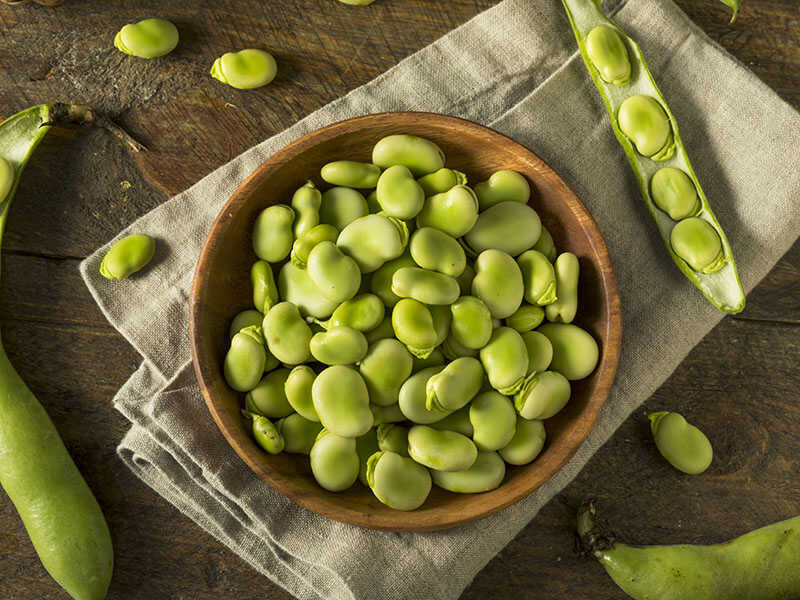
Fava beans (or broad beans and faba beans) are a worldwide culinary staple. Known for their buttery, nutty flavor, these beans are a superb source of many nutrients, including folate, proteins, calcium, iron, and zinc (3).
You can crunch this versatile ingredient in its raw form into salads or harness the power of dried beans in hearty dishes like falafel, soups, or stews. But I have a warning: individuals with a disorder called favism cannot join in the fava feast.
33. Frisée
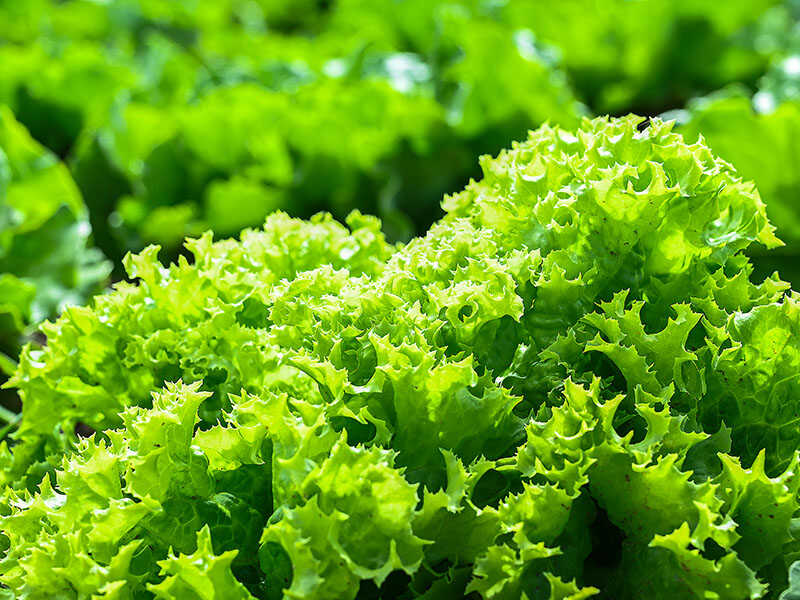
Frisée, or curly endive as some prefer, boasts frizzy leaves that look like shredded lettuce leaves. Its place in the chicory family, alongside radicchio and Belgian endive, might cause a mix-up because many people mistake it for lettuce.
Its leaves, which change from dark green to a softer yellow-green near the center, offer a crunchy texture and a mildly bitter flavor and peppery zing to your food. While frisée is more expensive than lettuce, it is a way to perk up your salads, sandwiches, or a sautéed garlic dish.
34. Feher Ozon Pepper
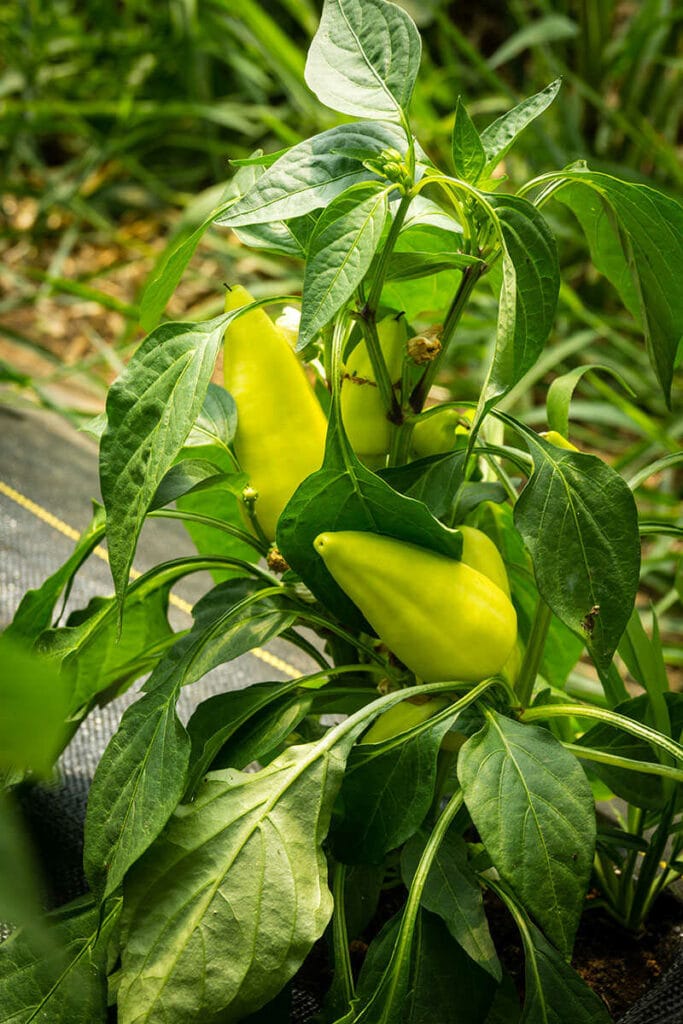
A treasured heirloom variety from Hungary, Feher Ozon pepper is the paprika variety with a twist. It parades in vibrant shades of red and orange and grows up to 5 inches long.
One bite into its thick, crunchy flesh reveals its sweet flavor, accented with just a hint of tang, yet completely devoid of heat. With its unique flavor and texture, this pepper variety is an ideal choice for grinding into powder.
35. Fenugreek
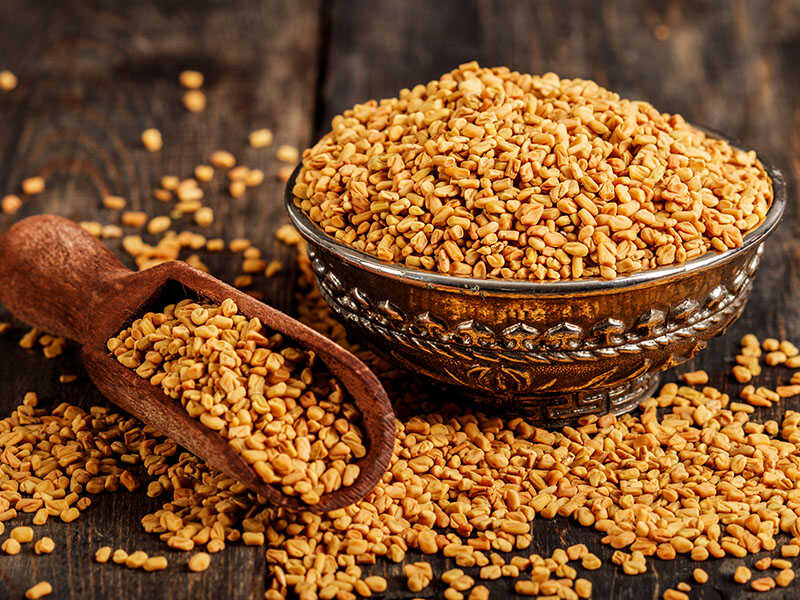
A culinarily versatile plant, fenugreek hails various regions, such as the Mediterranean, North Africa, West Asia, and the Indian subcontinent. Its leaves, sprouts, and dried seeds can serve as herbs, vegetables, and spices respectively.
Their flavor profiles? Think clover-like for the leaves and a mix of tangy, bitter, and maple-syrup-like for the seeds. With them, you can spice up everything, from Egyptian to Indian dishes.
But it’s not just about taste. Fenugreek is a friend to diabetics since it can slow sugar absorption and stimulate insulin. This wonderful condiment also boasts the amazing qualities of increasing both breast milk production and, wait for it, sexual desire.
36. Field Blewit
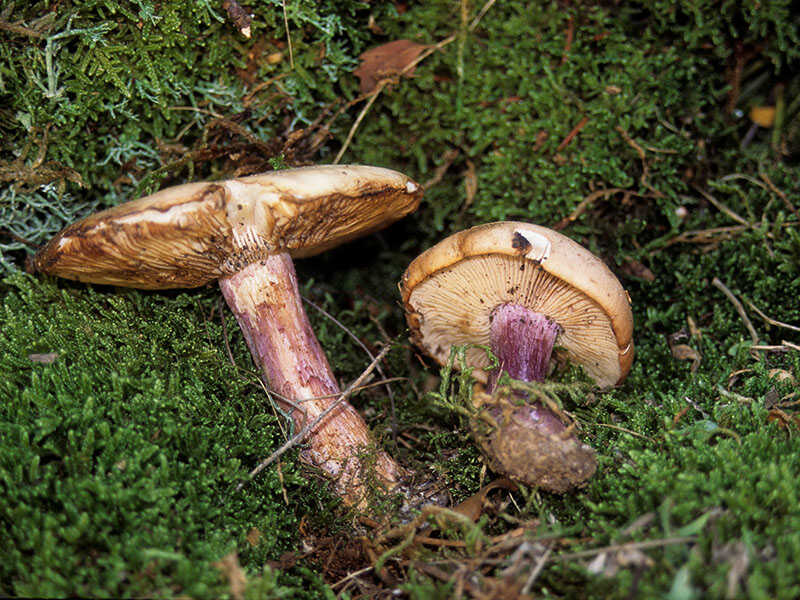
Field Blewit, or Lepista personata, might sound like the name of a secret agent, but it is actually a wild edible mushroom, one of two blewit species found in Europe and America (the other one is wood blewit). You might even spot it masquerading as ‘blue legs’ in your local supermarket.
With a grayish-brown to beige cape, this versatile fungi shows itself during fall and winter. You can cook it in many ways, such as frying, stewing, or sautéing, and its meaty, nutty flavor doesn’t disappoint.
However, while field blewit is generally safe to eat, some people might have an allergic reaction, so starting with small portions is a terrific idea.
37. Field Peas
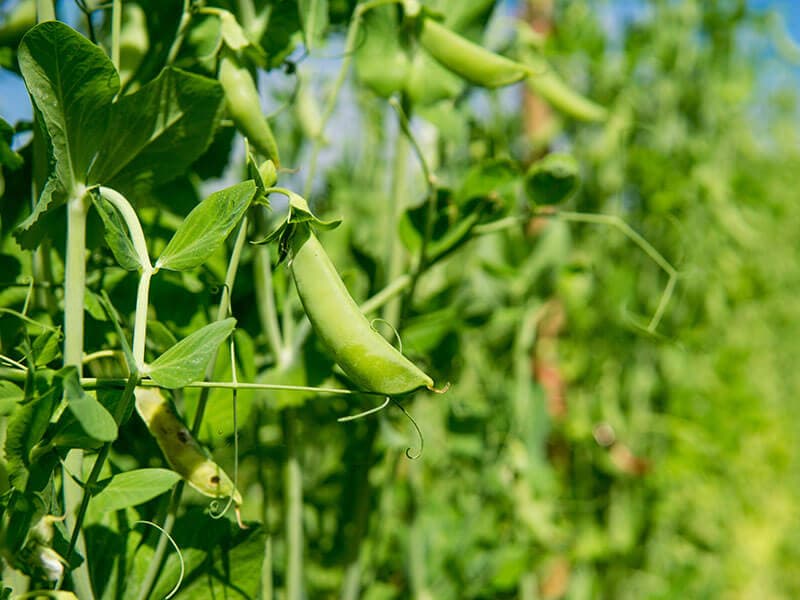
If you mistake field beans for cow beans, you’re not alone. The two legumes have a very similar appearance. Field beans enjoy a global fan base. They flourish in arid areas and, unlike garden beans, are typically sold dried and shelled.
High in starch, fiber, and amino acids, they share a flavor profile with black-eyed peas and can substitute in many recipes. Field beans can bring a nutrition-packed punch to any meal, whether raw, marinated, transformed into a dipping sauce, or added to soups, stews, and salads.
38. Filius Blue Pepper
Originating from Mexico, the Filius blue pepper is a small heirloom chili pepper that brings a unique twist to the world of spicy food. As it ripens, it transforms from a captivating deep blue-purple shade to a vibrant red, making it an attractive houseplant as well.
Young Filius blue peppers can go toe to toe with tabasco and cayenne peppers, clocking in at 40,000 to 50,000 Scoville units. But as they mature, these peppers mellow out, losing most of their heat and developing a sweet flavor much like bell peppers.
Therefore, whether you fancy a spicy kick or sweet touch, an exotic blue shade or a classic red color, Filius blue peppers can always meet your expectations.
39. Fioretto Cauliflower
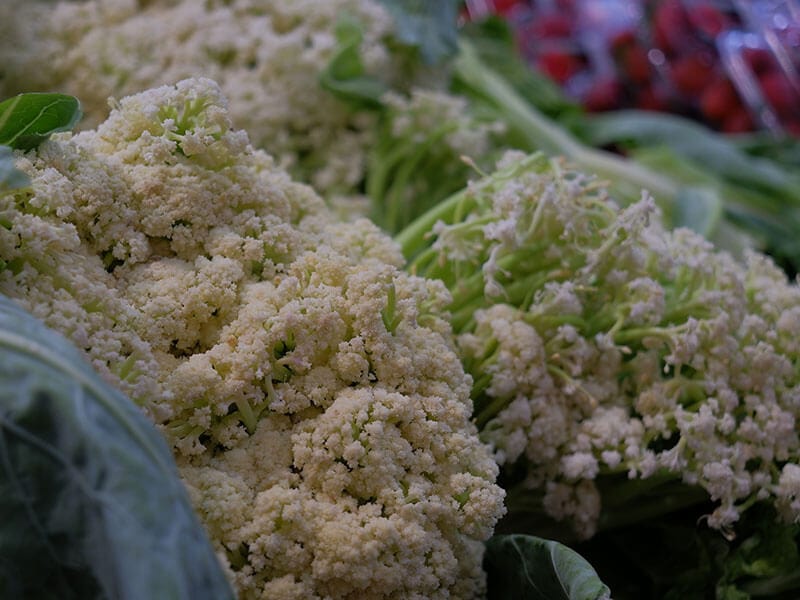
Fioretto cauliflower is a charming blend of broccoli and cauliflower from Japan. People sometimes refer to it as stick cauliflower. This unique hybrid has a compact size with small florets perched on long, thin stems.
With a crisp texture and a sweeter and nuttier flavor than its cauliflower parent, Fioretto cauliflower is a delight for both cooking and eating raw. When it comes to steaming or stir-frying it, aim for an al dente texture for the best experience.
40. Fish Pepper
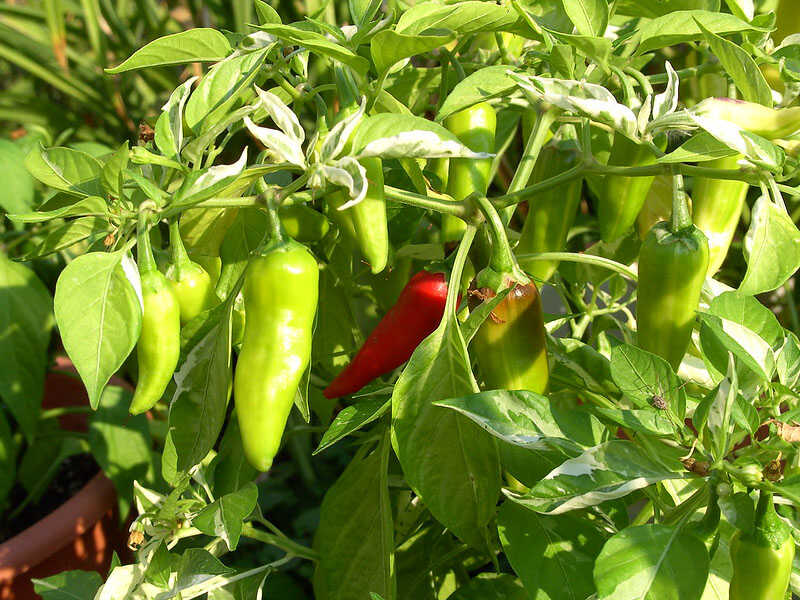
This African-American heirloom variety traces its roots back to 19th-century Chesapeake Bay. Despite nearly fading into obscurity, it made a triumphant comeback in the 1990s. Ranging from 5,000 to 30,000 Scoville units, its heat varies from mild to quite spicy.
Unripe peppers are pale green with stripes, while ripe ones glow uniformly red. Contrary to its name, it doesn’t taste fishy at all. Instead, this name was derived from its historical role in fish and seafood dishes. But you can use it to spice up a wide range of savory delicacies, too.
41. French Breakfast Radish
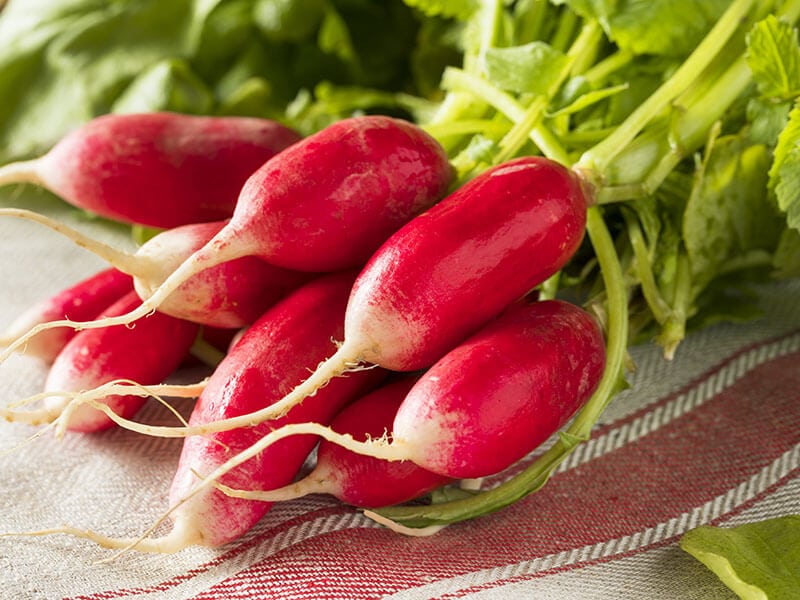
Despite its name, French breakfast radish isn’t a staple in France’s breakfast culture. This misnomer could trace back to the Victorian-era English upper class, who fancied it during breakfast. And “French” simply refers to its country of origin.
With smooth skin that transitions from pink to pale purple and ends with a white tapered tip, this radish looks as enticing as it tastes. Its mild sweetness is accompanied by a subtle peppery flavor. You enjoy it raw for a crisp snack or cook it to mellow the flavor.
42. Flat Cabbage
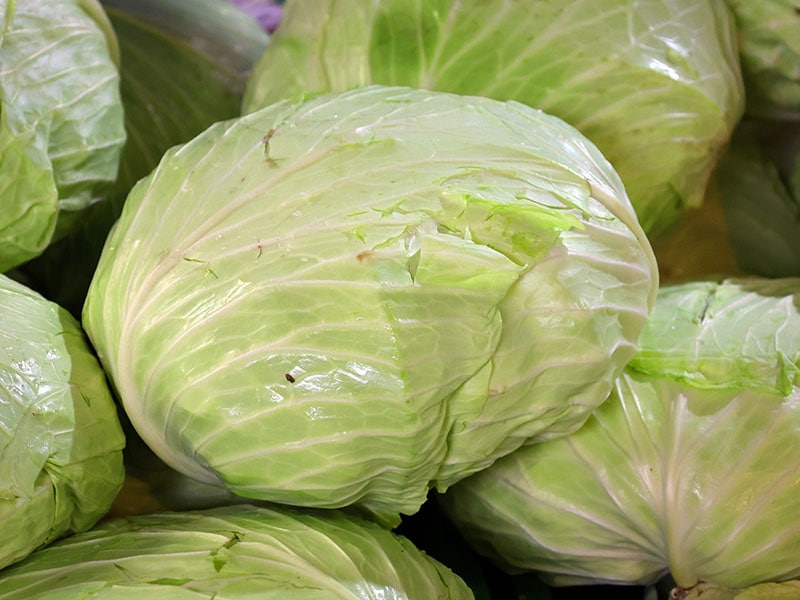
Also known as Taiwanese cabbage, the flat cabbage is a break from the classic green cabbage. It sports a distinctive flat, oblong shape, with crunchier leaves and a sweet, vegetal flavor.
You will find no bitterness in the taste. In addition, this type of cabbage is available all year round and is a dependable ingredient for dishes like salads, coleslaw, and stir-fries.
43. Flat Italian Onion
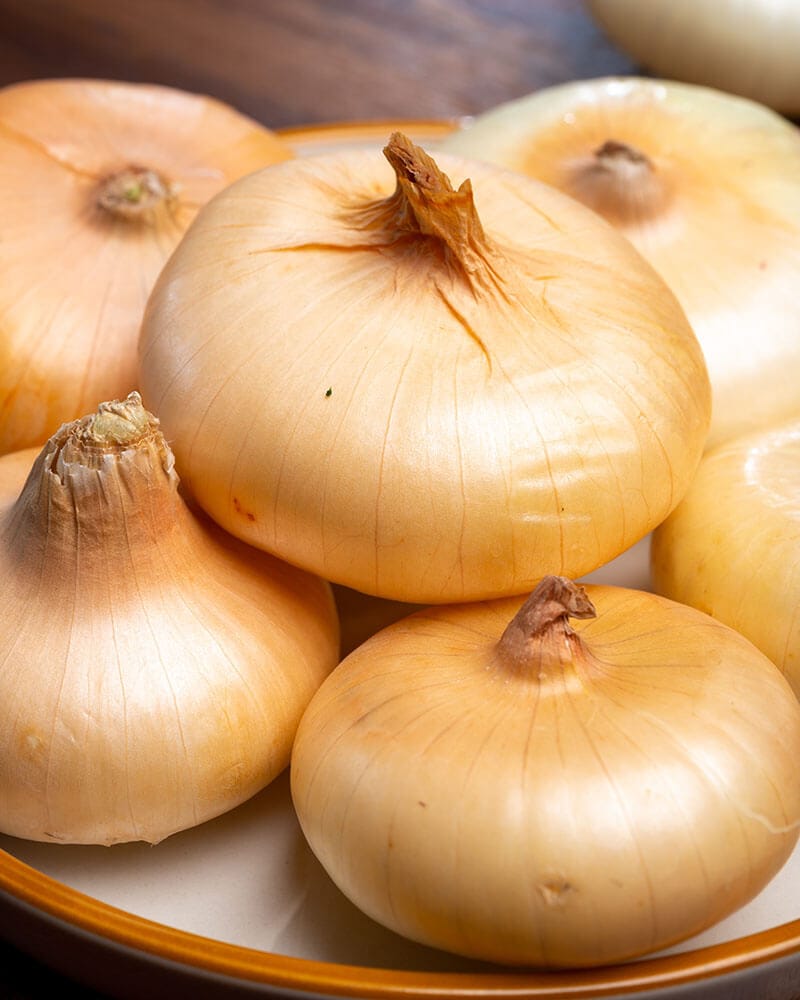
A variety of cipollini onions (Italian onions), this one is known for its small to medium size. You can use an Italian flat onion whole in cooking. Its flat top and bottom as well as thin skin makes it easy to handle this onion in the kitchen.
While the low sulfur level gives Italian flat onions a sweet edge over most onions, they maintain a strong, distinctive onion flavor. Whether stewed, braised, roasted, or skewered for kabobs, these onions work wonders. The only hiccup is that they’re not ones for long-term storage.
44. Flax Microgreen
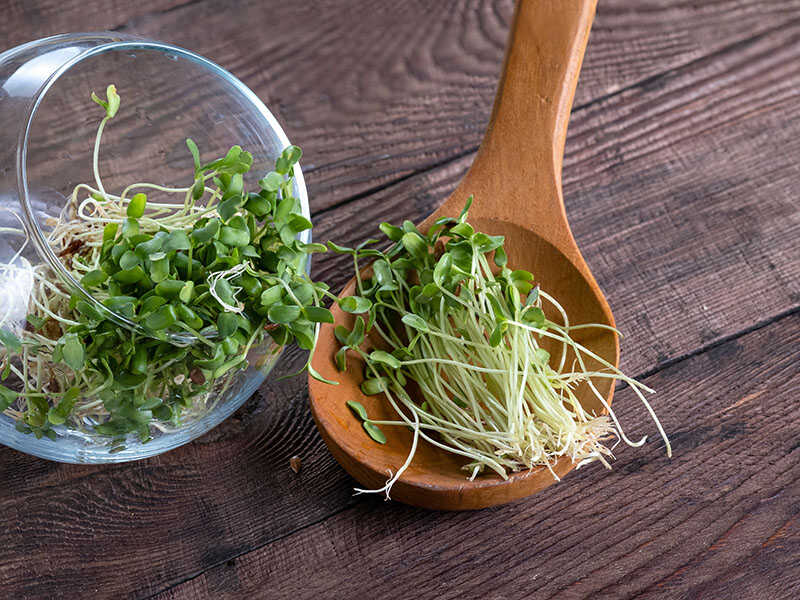
Flax microgreens are the sprouted versions of flaxseeds. You can grow them in a moist environment until they reach a height of 1-3 inches, usually within 5-14 days.
These tiny greens boast a delicate nutty flavor. They’re also a nutrition powerhouse, packed with fiber and omega-3 fatty acids.
45. Flint Corn
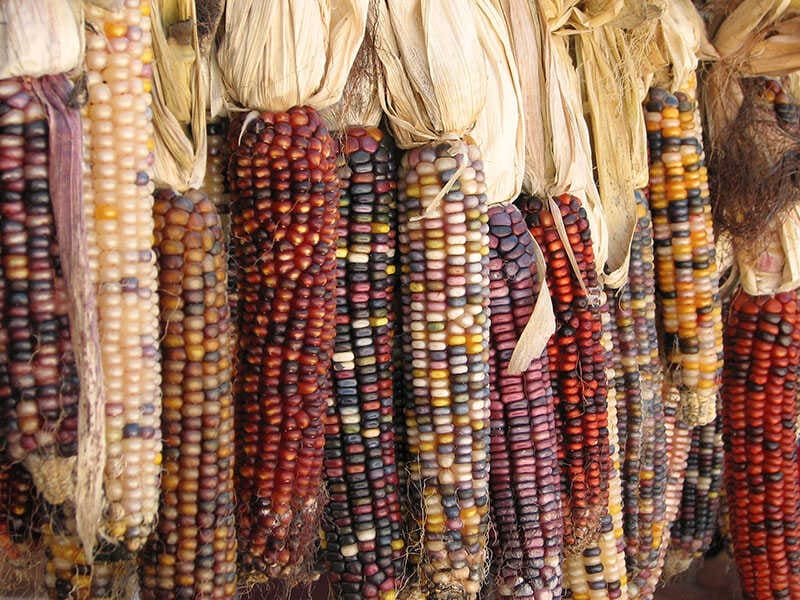
You may know this type of corn as calico corn or Indian corn. It boasts hard, multicolored kernels – think dark blue, yellow, and red all on one cob. This toughness earns it the name “flint”, but don’t let that deter you from trying it.
The colorful appearance makes flint corn a favorite for decorative purposes, particularly during Thanksgiving. In terms of cooking, you can turn the corn into hominy, grits, popcorn, or cornmeal. Plus, it is an excellent feed for chickens.
46. French Beans
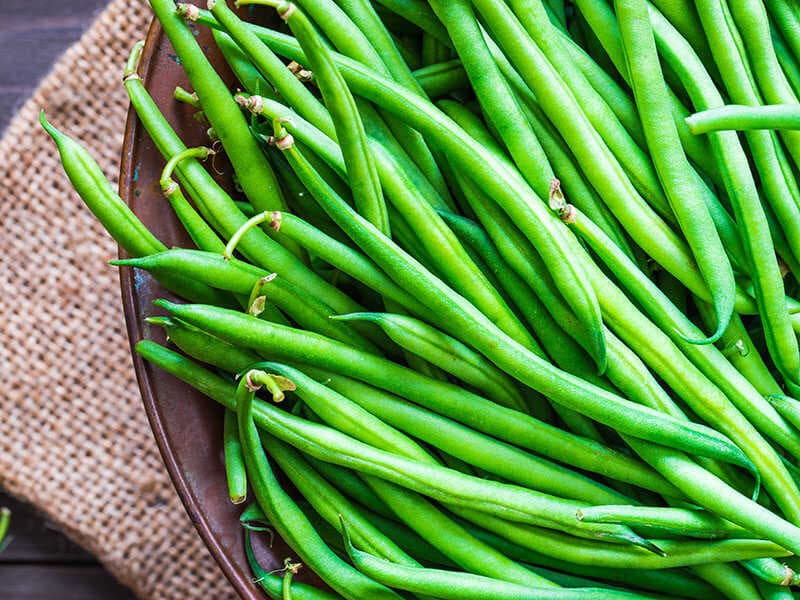
French beans is just a chic name for green beans, like string beans or snap beans. If you want to be extra fancy, you can use the proper French name, haricots verts.
Anyway, this type of bean originated in Central and South America. You should cook French beans in their pods to unlock an irresistibly sweet and earthy flavor. To preserve their vibrant green color, consider blanching them in hot water before proceeding to steam, roast, or sauté.
47. French Purslane
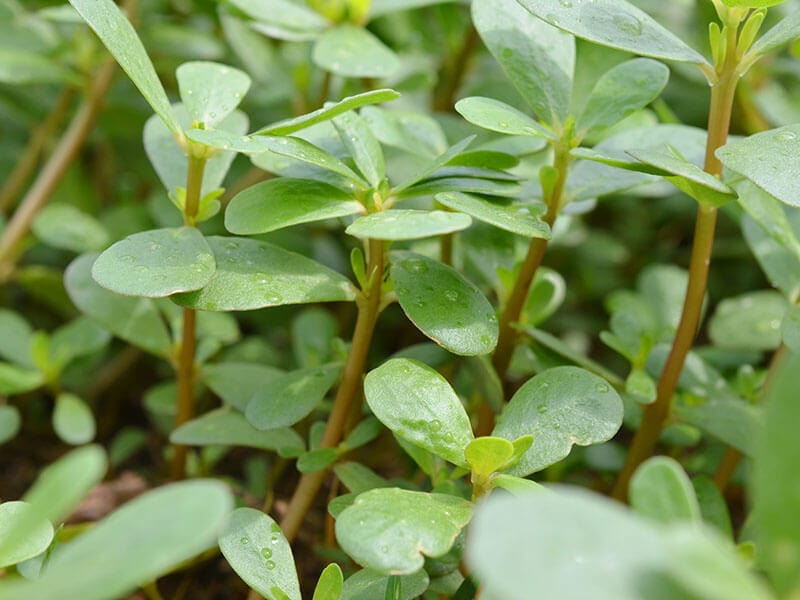
You can find French purslane, also known as little hogweed or wild portulaca, in many places, even in your backyard and garden. Some might deem it a weed, but this vegetable is chock-full of vitamin A and antioxidants.
It boasts juicy leaves with a mildly sour or salty flavor, much like spinach. While certain vegetable haters may find it slimy, French purslane is versatile enough to be eaten raw, in salads, or cooked.
However, this green isn’t for everyone. Its high oxalic acid content renders it unsuitable for those with kidney disease. In addition, you should distinguish it from the poisonous spotted spurge.
48. Friggitello
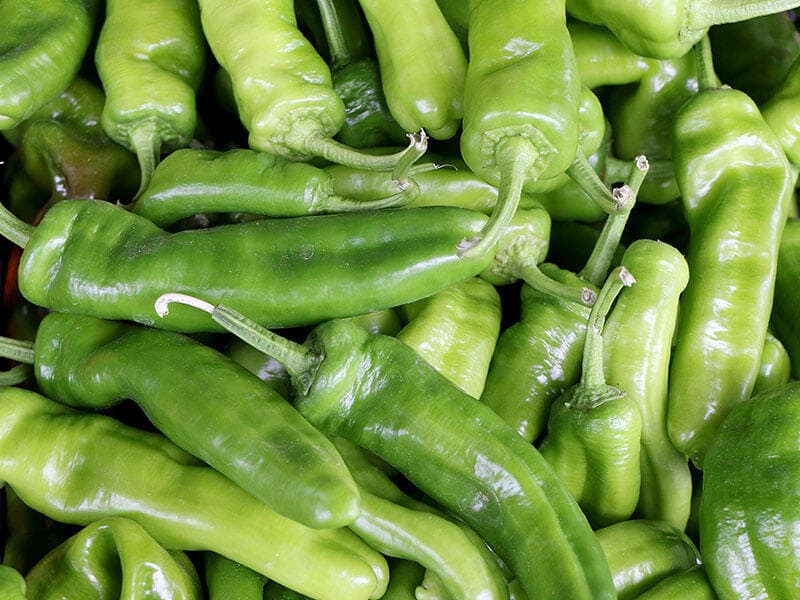
Friggitello (or friggitelli in plural form), is a sweet Italian chili pepper. Its alternative names are pepperoncini, sweet Italian pepper, or Golden Greek pepper. The last one may come from its color, which can change from bright yellow to yellow-green.
This chili isn’t spicy like the peperoncini or peperoncino di Cayenna. Rather, it is sweet and contains minimal heat. You can enjoy it raw, sauté it, stuff it, or use it in a salad.
Snacks
49. Fruit Salad
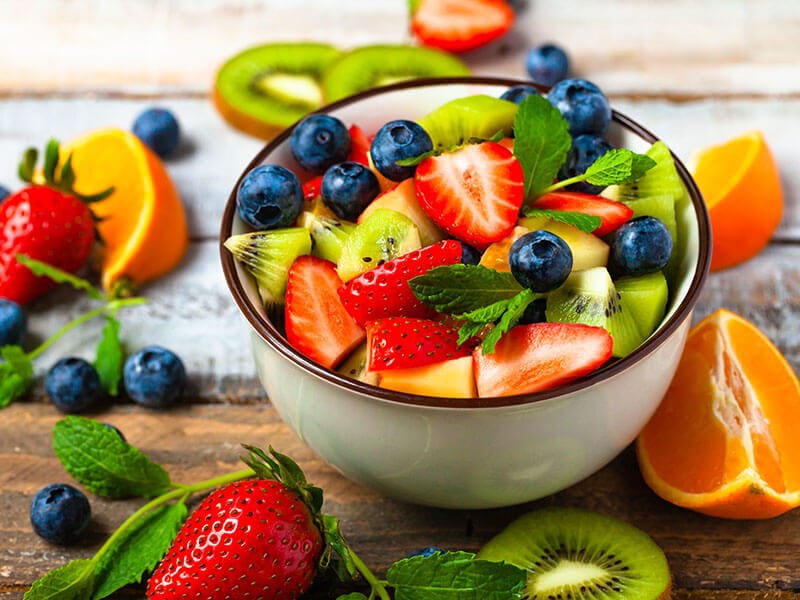
Unlike its close relative fruit cocktail, which uses bite-sized pieces, fruit salad is a mix of large chunks of fruits. There are many recipes with varying fruits and sauces, but the main ingredients for fruit salad are often strawberries, apples, pineapples, kiwis, and grapes.
But a mouth-watering fruit salad needs more than just food. You can add extra ingredients to it, like juices, mayonnaise, yogurt, etc. There are some rules to preparing this dish. For example, melons, green bananas, and plantains don’t make the cut.
And remember that lemons and papayas shouldn’t be together. Don’t mix sweet and acidic fruits with one another. And to keep your salad from browning, try coating the fruits with diluted honey water or acidic juice such as orange or pineapple. Alternatively, an all-citrus fruit salad is also wonderful.
50. Froot Loops

Do your kids (and you) enjoy this iconic fruit-flavored breakfast cereal every morning? Since 1959, this Kellogg’s creation has charmed generations of cereal lovers. Available in many vibrant colors, it can be found in the United States, Australia, Canada, South Africa, etc.
The ring-shaped cereal pieces pair beautifully with milk. They can also double as whimsical decorations for cakes and cookies.
51. Fondue
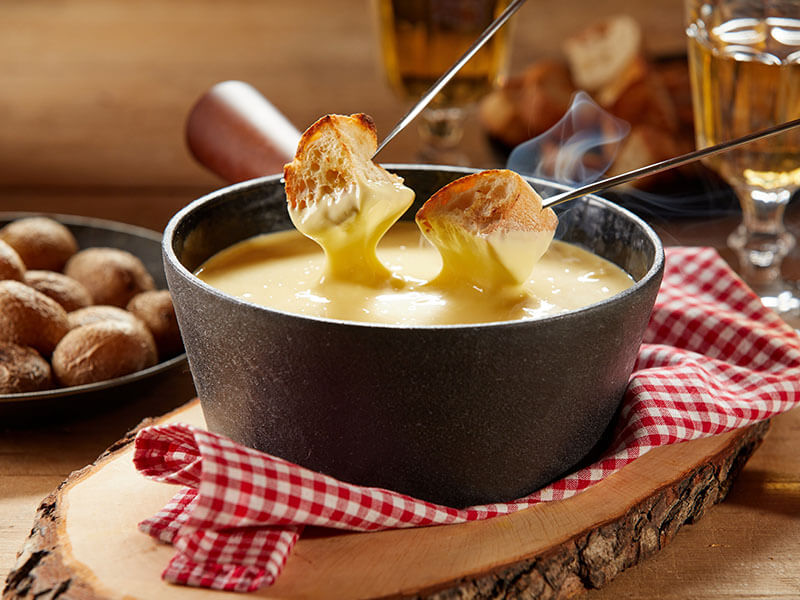
What comes to your mind when I mention fondue? A bubbling pot of molten cheese? If so, you’re nearly correct. A fantastic fondue pot also requires garlic, wine, and some fragrant spices like nutmeg, mustard, or paprika.
This Swiss delight is a wonderful winter delight that you can use as a dip for dishes like bread, strawberries, or even marshmallows. Choose a great wine variety that can go with fondue, and it will make an ideal meal for a chilly winter evening.
But since fondue is piping hot, dipping your finger in it is a no-no. Also, adhere to fondue etiquette, such as avoiding eating straight off the fork or transferring the warm cheese to your plate.
Why don’t you spare a few minutes to learn how to cheese fondue at home?
52. French Fries
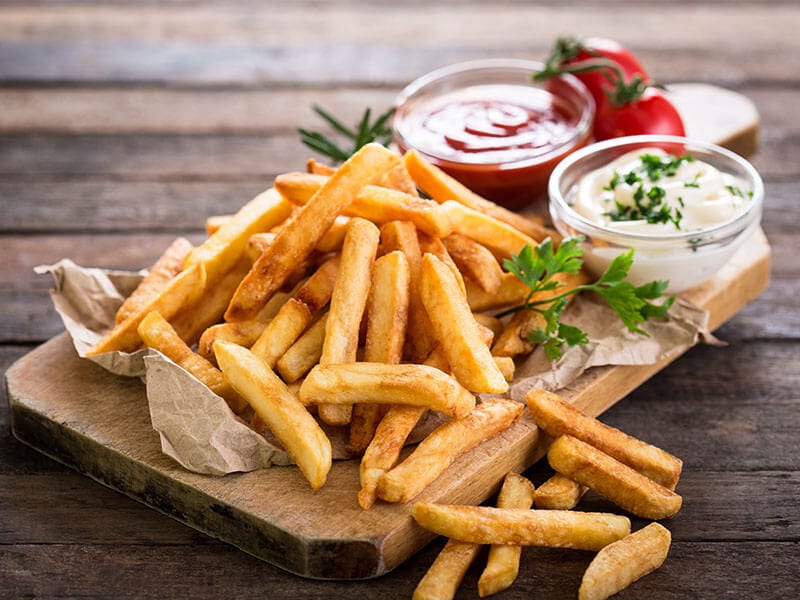
French fries, or chips in the United Kingdom and Australia, are cut potatoes into even, long, and thin shapes. Unlike their simpler cousin (the finger chip), they get dunked twice in hot oil for that extra crispness. A light sprinkle of salt is necessary to enhance their taste.
Their origin is an interesting tale. They might have been born in Belgium, where French is a primary language. The “French” in their name, however, probably owes its existence to American soldiers stationed in Europe during WWI.
Since the fries came from French-speaking people, the soldiers conveniently called it French fries. Today, Belgians pride themselves on having the best French fries in the world. How about you? Do you think French fries are French?
53. Falafel
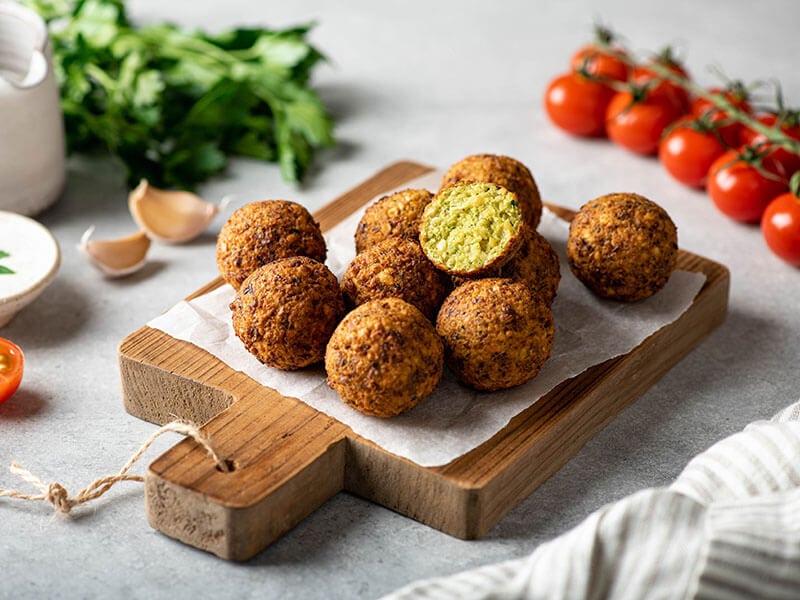
These chickpea- and fava bean-based bites are more than just simple snacks. They’re seasoned with garlic, parsley, and green onions and then shaped into balls or patties. They boast a pleasing crispiness thanks to a trip to the deep fryer or the oven.
Originally a Middle Eastern and Mediterranean treat, falafel has crossed borders and oceans to become popular in Europe and North America. Given its crunchy texture, herby and spicy flavor, and high plant-based protein content, you can easily see how this happened.
And if you’re looking for a fun way to enjoy it, why not try a falafel wrap? It’s simply a flatbread topped with vegetables, hummus, pickles, and of course, falafels.
54. Frankfurter

Though this classic German sausage was named after the city of Frankfurt, many people think of Vienna, Austria’s capital, as its birthplace. This would explain the alternate name ‘wiener’. There is another common name for it in America: a hot dog.
This smoked, and cooked sausage was traditionally crafted from pork and spices, all stuffed in natural casings made from animal intestines or collegian. Modern versions are more varied, with choices like beef, chicken, or turkey.
Now, let’s talk about the composition. A frankfurter has a decent protein content, about 15%, and a higher fat content, around 30%. They come in various sizes, but the 6-inch length is most popular.
As for the best way to eat a frankfurter, they are ready-to-eat right out of the package, but you can try steaming, grilling, or frying them.
55. Fajita
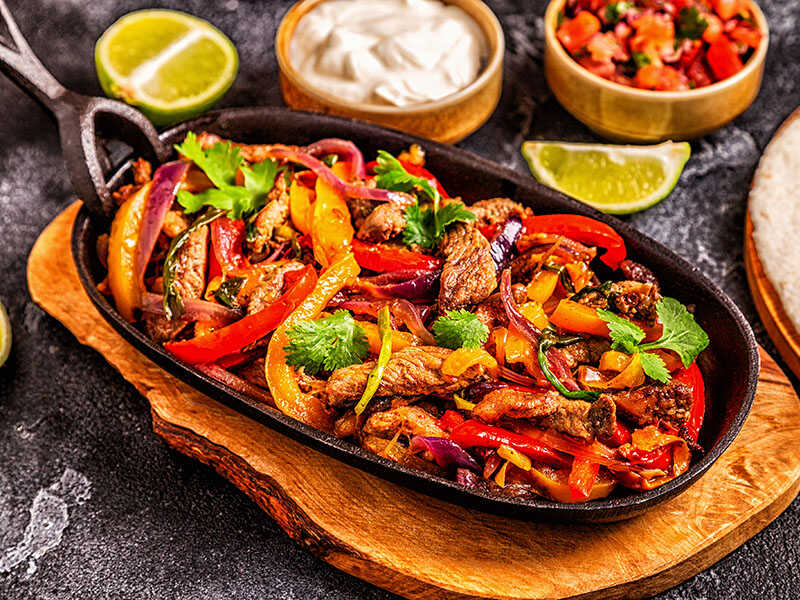
This flavorful Mexican delicacy rose to fame in the 1970s. It facilitates a fun, interactive meal, where eaters assemble their own fajitas at the table.
You just need to fill a tortilla (made from either flour or corn) with a medley of ingredients. Sizzling hot meat (commonly carne asada) and sautéed vegetables take center stage, while refried beans, salsa, guacamole, and sour cream add layers of flavor.
You can also use other cuts or types of meat for the filling, such as chicken. Unlike tacos, which often use raw vegetables, fajitas shine with cooked ones. Another difference distinguishing tacos from fajitas is that the former is always prepared before the party.
56. Fudge

Fudge is an American-born sweet treat that is well loved for its creamy texture. It is made by cooking sugar, butter, milk, and chocolate, together, then beating the mixture into a soft consistency. You can add extra ingredients for floorings, like vanilla, peanut butter, butterscotch, etc.
The mark of a high-quality fudge is in the tiny sugar crystals. However, successful fudge-making requires some care: a large pan that heats evenly, a candy thermometer for accurate temperature control, and a careful hand to avoid overbeating the mix.
57. Fritter
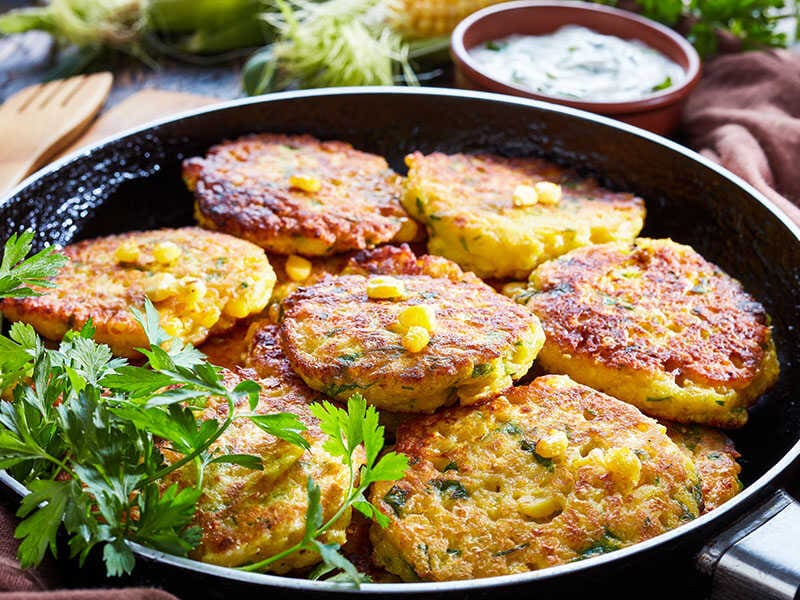
This versatile treat can swing between sweet and savory. Fritters can be as simple as deep-fried dough or a more complex blend of battered ingredients. From meats, seafood, and vegetables to fruits, anything can become a fritter.
Many cuisines have fritters, from apple fritters and banana fritters to pakora from India, even the famous fried fish in fish and chips from England. Sometimes, the fritter line blurs, and they become very similar to doughnuts or pastries.
58. Fish Finger
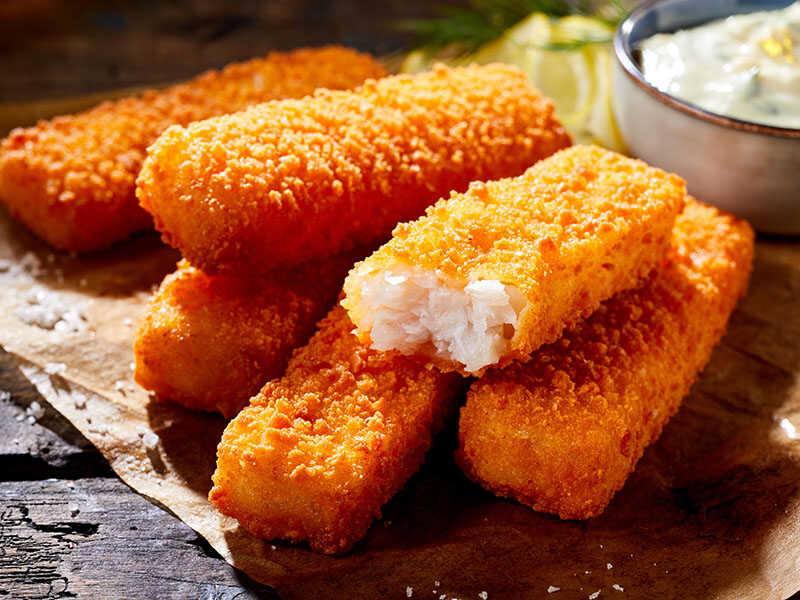
Fish fingers, or fish sticks as Americans call them, are the epitome of comfort food. They are made from minced whitefish encased in a crispy batter and then grilled or deep-fried into bite-sized sticks.
Popular fish varieties to make this treat include haddock, cod, or pollock. While fish fingers may raise some eyebrows due to their large amount of salt and fat, they also provide a healthy dose of protein and minerals.
Breads And Desserts
59. Flan
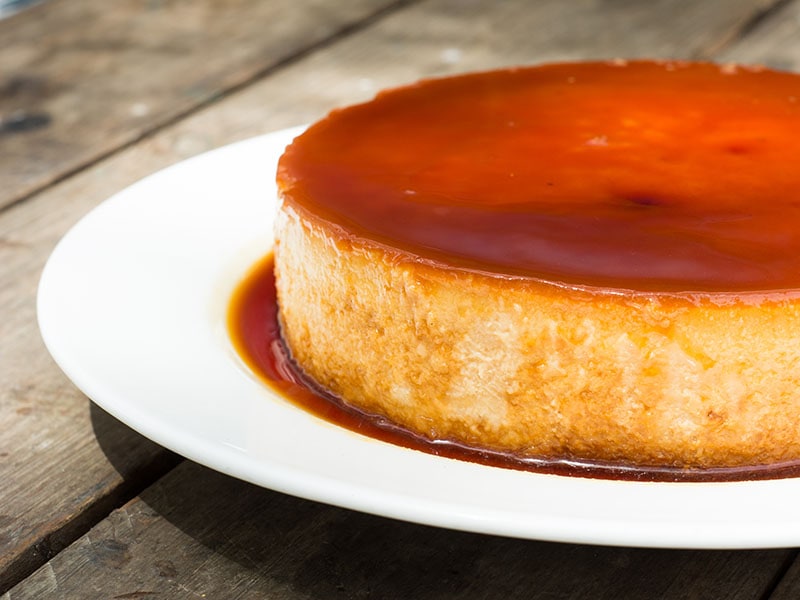
Going by other names such as caramel custard and creme caramel, this tantalizing sweet dish has taken many countries by storm, especially in Europe and Latin America. In these regions, you can find many finger-licking versions of flan.
The beauty of flan lies in three key ingredients: eggs, milk, and sugar. S recipes even toss in cheese or syrup for an extra burst of flavor.
When it comes to whipping up this dessert, the trick is to keep the batter as bubble-free as possible. To achieve that famous melt-in-your-mouth, silky texture, flan must be baked in a water bath with gentle heat. Voila, you’ve got yourself a decadently sweet and smooth dessert.
Watch this video to know more:
60. Focaccia
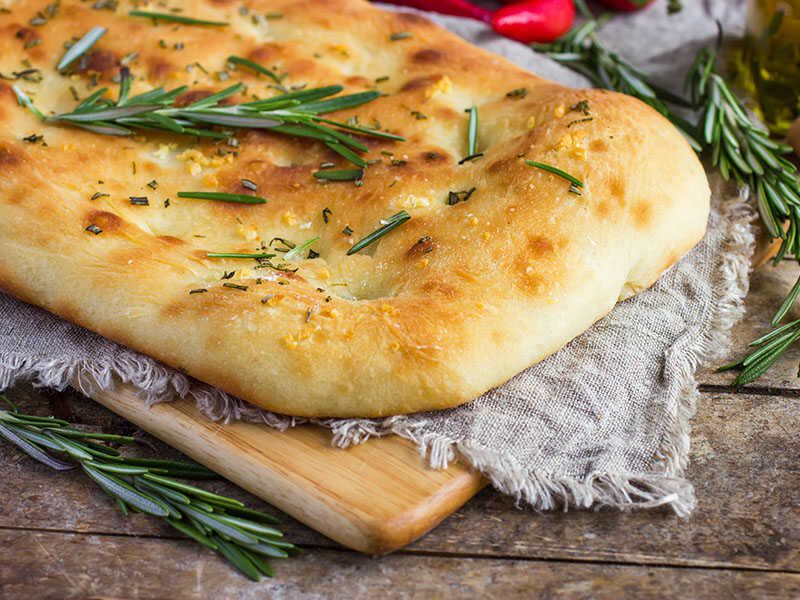
The rich history of focaccia dates back to Roman times. Some call ancient leavened flatbread “pizza bianca” due to its textural similarities with pizza, and it is also believed to be the inspiration for pizzas. Its popularity in America soared in the 20th century thanks to Italian immigrants.
With a recipe similar to pizza but with an extra dose of yeast, this Italian bread boasts a fluffier consistency. Meanwhile, the hearty lashings of olive oil and herbs infuse it with a flavorful taste, setting it apart from standard bread.
While it’s pricier than your average loaf, its wonderful flavor is worth every penny. You can find focaccia in various shapes, and you can enjoy it on its own or stuff it with cold cuts, cheese, and vegetables.
61. Fruitcake
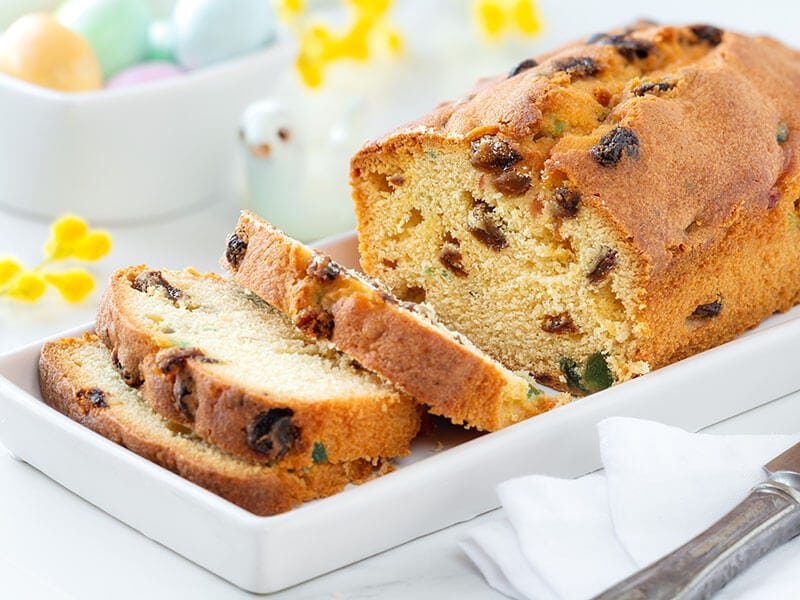
This rich, flavorful cake is filled with dried fruits and spices and drenched in brandy or high-proof spirits for an added flavor and longer shelf life. In fact, fruitcakes can last famously long. They can stay edible for months, as long as there is occasional brushing of liquor to maintain its moistness.
While fruitcakes don’t need refrigeration, and a cool, dark place would do for storage, keeping it in the fridge is still recommended. Interestingly, there are even anecdotes of fruitcakes lasting for decades (4)! This cake was the first type of military ration due to its nutritional profile and long shelf life.
This moist and decadent delight also holds a special place at Christmas and wedding celebrations in many Western countries. Back in the 17th century, it was so indulgent that it was even banned in Europe!
62. Funnel Cake
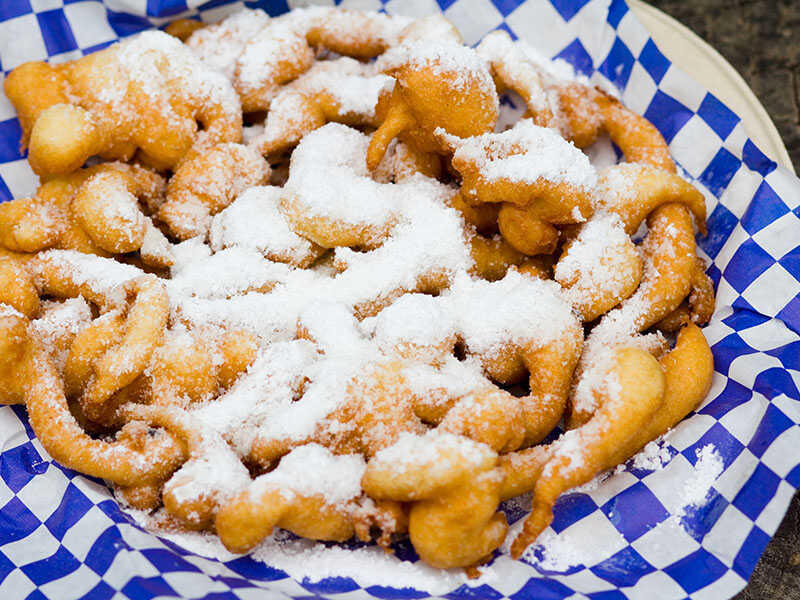
With roots in Pennsylvania, this deep-fried dessert makes every amusement park or carnival visit more thrilling. These locations also give the treat an alternative name: the carnival cake. A funnel cake topped with syrup or ice cream is every child’s dream.
Like doughnuts or churros, funnel cakes are prepared with everyday ingredients like flour, sugar, milk, baking soda, and eggs. Its unique name traces back to its quirky cooking method – squeezing batter through a funnel into hot oil, creating a beautiful swirl.
63. Flatbread
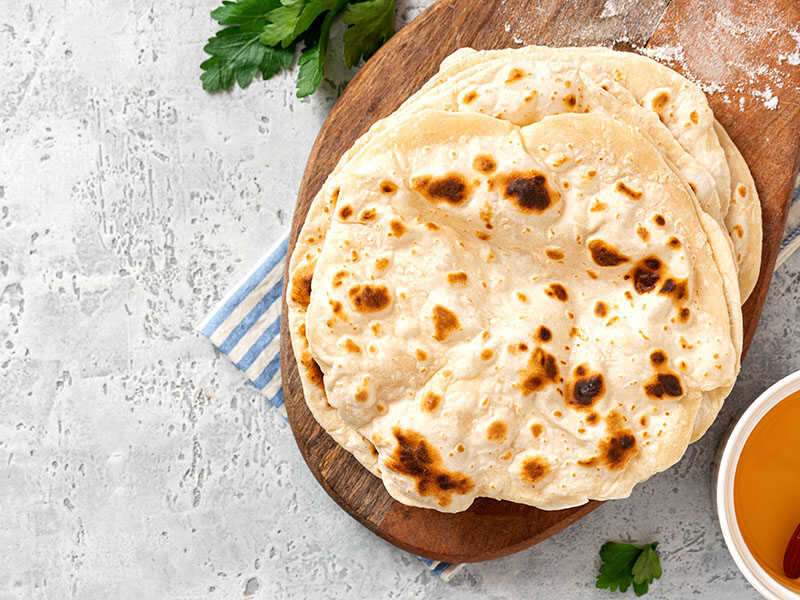
Flatbread is such a self-explanatory name. Its main ingredients include flour, salt, liquids, and occasionally eggs. This bread skips the leavening agents for a thinner, versatile base. It takes many forms around the world, morphing into tortillas, focaccias, lavash, fry bread, or naans.
Meat And Seafood
64. Filet Mignon
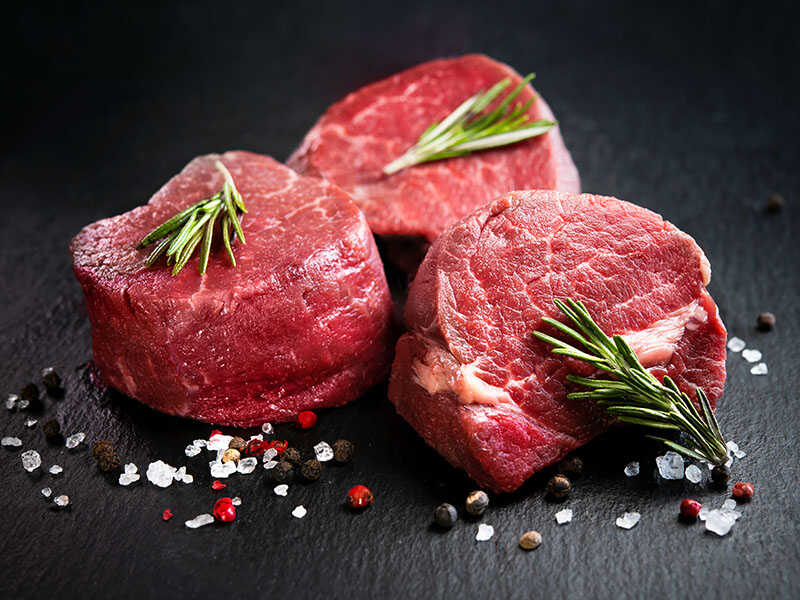
Filet mignon is sourced from the smaller end of a beef tenderloin or pork tenderloin (the latter is in France). This cut of meat is noted for its extreme tenderness and is one of the most spectacular steakhouse cuts.
Thanks to its versatility, filet mignon is a guaranteed crowd-pleaser. When it’s time to cook, high heat is the way to go, whether that means grilling, pan frying, broiling, or roasting.
65. Fish
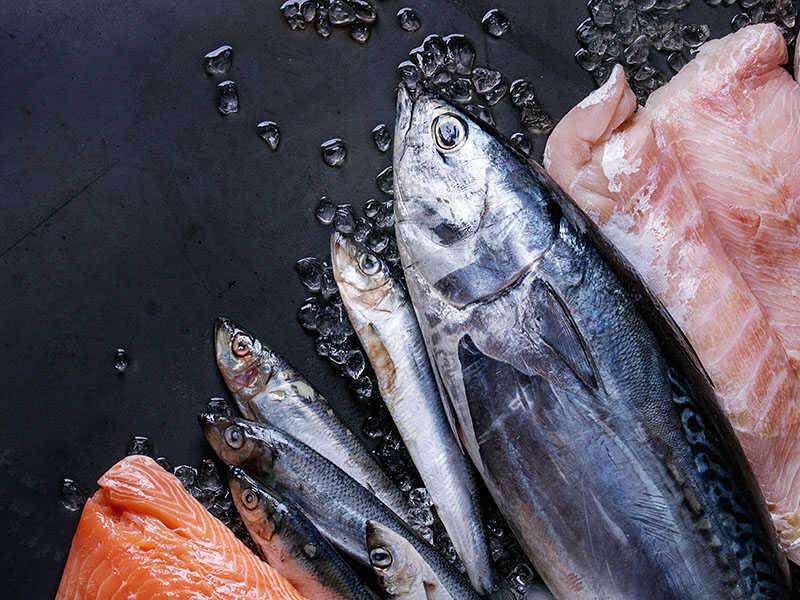
Fish is a universal term for aquatic, gill-bearing craniates, with over 20,000 species. There are three superclasses of fish: Osteichthyes, or bony fish, Agnatha, or jawless fish, and Chondrichthyes, or cartilaginous fish (having cartilage rather than bones).
Common varieties include the grass carp, Peruvian anchoveta, silver carp, common carp, etc (5). Beyond their ecological significance, fish are a nutritious food source, rich in protein and vitamins.
A prime source of omega-3 fatty acids, fish are excellent at reducing heart disease risk and lowering triglyceride levels (6).
66. Flounder
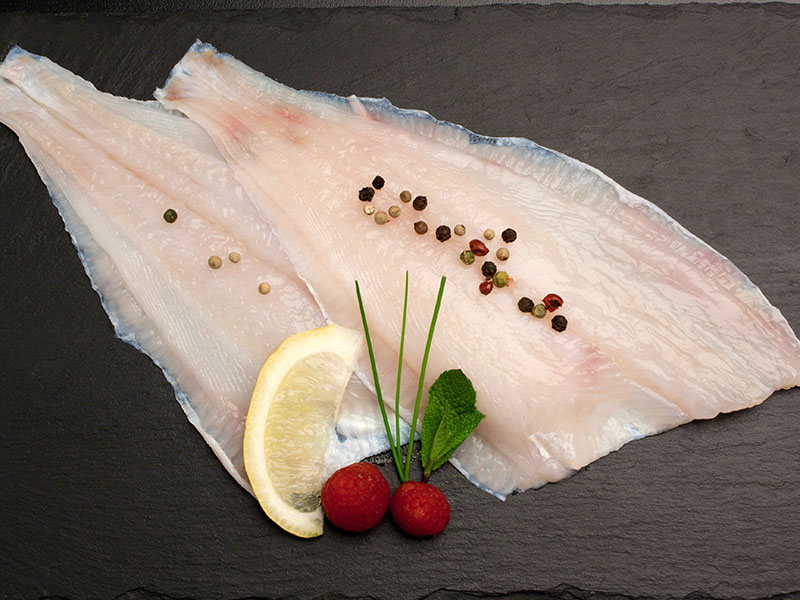
Flounders belong to a group of flatfish species and are easily recognizable by their white underside and dark topside. This saltwater fish has mild, white flesh similar to tilapia and is a healthy and versatile food choice. Nutrition-wise, it is rich in vitamin B12 and heart-healthy omega-3 fats (7).
You can find the fish sold as whole fish or thin filets. It is usually skinned, though the skin is quite edible. It cooks beautifully, with whole flounder suitable for sautéing, steaming, or roasting, while the filets are ideal for sauteed dishes.
67. Freshwater Eel (Unagi)
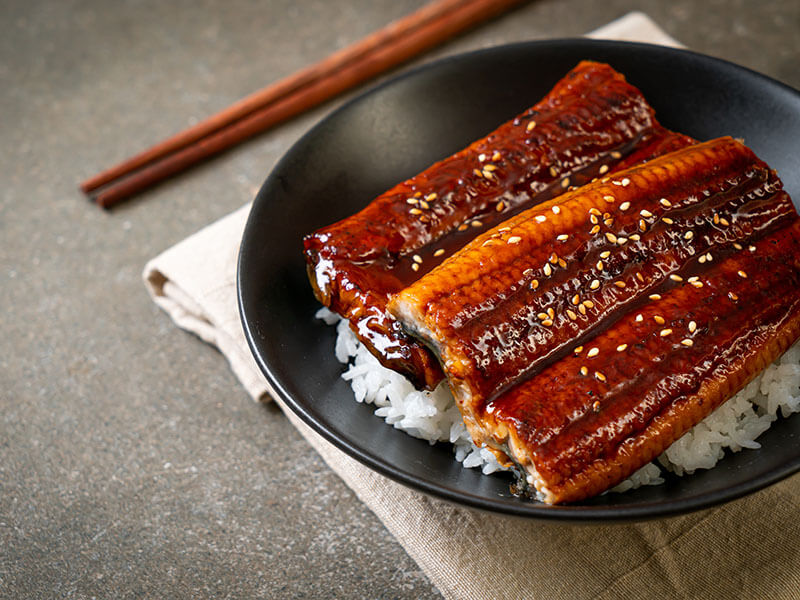
A staple in Japanese and Chinese cuisines, freshwater eels have a long, snake-like body stretching from 2 inches to a staggering 13 feet. They can be fairly pricey, but eel-based dishes like unadon and unaju never fail to be big hits.
This eel isn’t just versatile in preparation but also offers a nutritional boost. It is low in sodium, sugar-free, and packed with potassium and phosphorus.
Besides being carbohydrate-free, freshwater eels also offer 18 amino acids and a rich array of vitamins, including A, B1, B2, B12, D, and E.
68. Flathead Fish
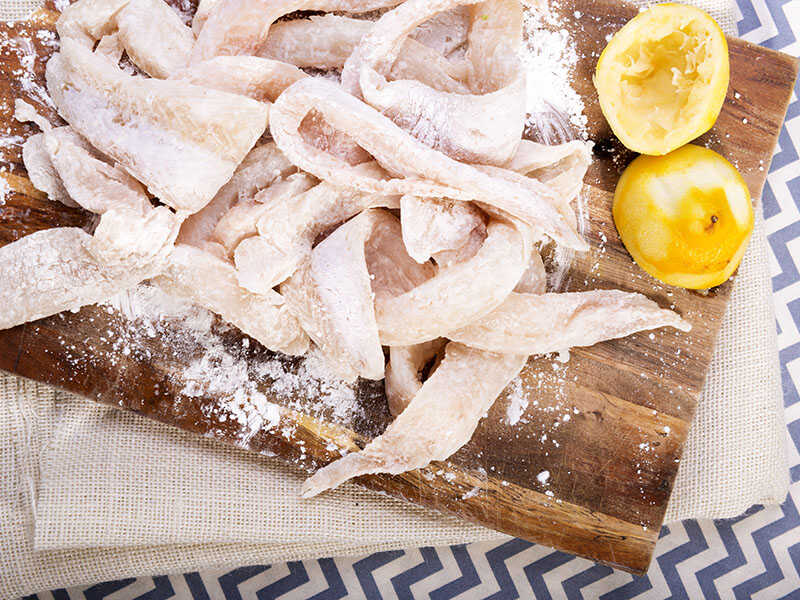
Flatheads are a small to medium fish with a flat head. You can find this type of fish in many places in Australia and Indo-Pacific areas.
They have a flat, triangle-shaped head and a lengthy, dark-skinned body. The largest flathead species in Australia is the dusky flathead, which can grow to be over 1 meter long and weigh more than 15 kilograms.
You have several ways to have a delicious meal with flatheads, as they are very easy to prepare and cook. You can fry, steam, or grill it and serve it along with chips, smashed potato, or salad.
69. Fugu Fish
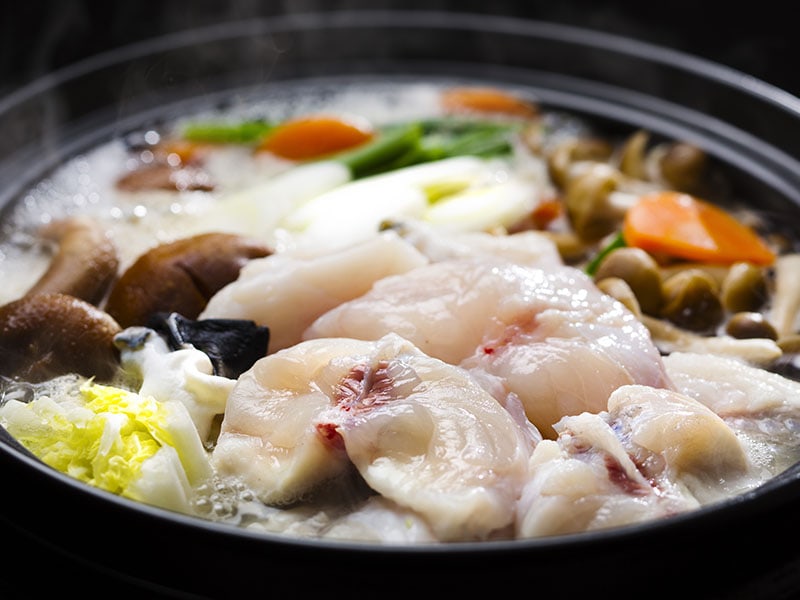
Though a famous Japanese delicacy, fugu fish contains the dangerous toxin tetrodotoxin, so only experienced chefs can prepare it safely.
In fact, it is illegal to serve fugu fish in many parts of America and some countries because of death cases related to its consumption. Since only qualified chefs are permitted to cook the fish, you cannot buy them at the market or prepare them at home.
Fugu fish is served as sashimi (raw) or chirinabe (cooked hot pot with vegetables) in Japan, and it is one of the most exotic Japanese dishes.
Watch this video to know more:
70. Frog Legs
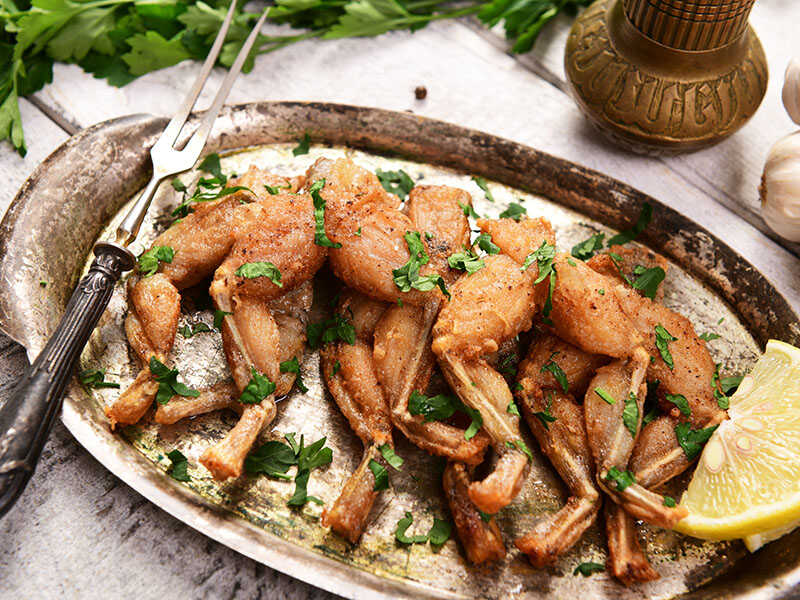
Many people might find it quite revolting to hear about this dish, let alone consume it. But it is a delicacy in French and Chinese cuisine. This type of meat can also be found in some Asian countries such as Vietnam, Cambodia, Thailand, etc.
Frog legs have a chicken-like flavor and texture. Although their skin might look unattractive, their meat has an irresistible flavor. In addition, frog legs are high in protein, vitamin A, and omega-3 fatty acids.
There are various ways to cook frog legs. In France, they season frog legs with salt and pepper, then coat them with flour and heat it with melted butter until it turns golden brown. This dish goes well with sauce and bread.
Main Dishes
71. Fufu
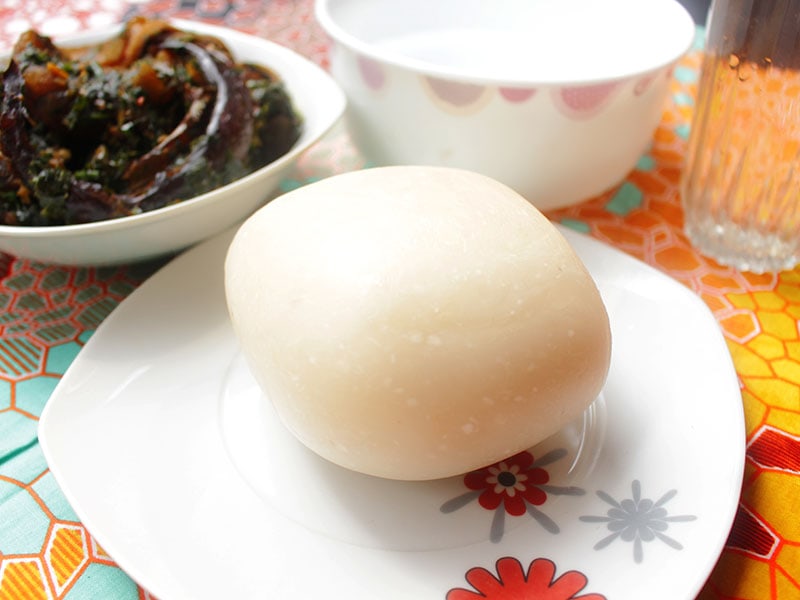
Fufu, alternatively spelled as foo foo or foufou, is a traditional West African dish with roots in Ghana. Locals serve this dough-like meal in a large round form, especially at family gatherings.
“Fufu” translates to “mash” or “mix” in English, referring to its nature as a pounded mixture of plantains, yams, or cassava. This staple food has a unique taste profile, ranging from sour to bland and even tart. But don’t try it solo. Fufu is the perfect accompaniment to flavorful African soups.
72. Farfalle
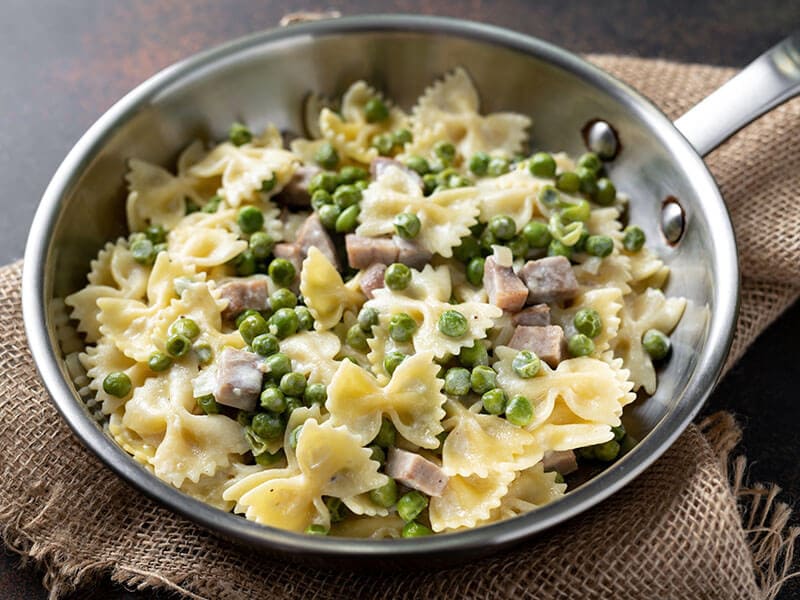
Farfalle is a type of pasta from Italy. While this Mediterranean country has hundreds of fine pasta varieties, farfalle boasts many wonderful qualities to rise above the rest.
Because of its shape, farfalle also goes by the name of bow-tie pasta or butterfly pasta. It can be eaten in a variety of ways, although people often serve it with potatoes or creamy meat sauces. Alternatively, you can cook the pasta with seafood and sauce.
You can easily find farfalle in supermarkets around the world. It is extremely simple to cook. You only need to boil them in water for some time, then serve it with your favorite sauce or topping.
73. Fettuccine Alfredo
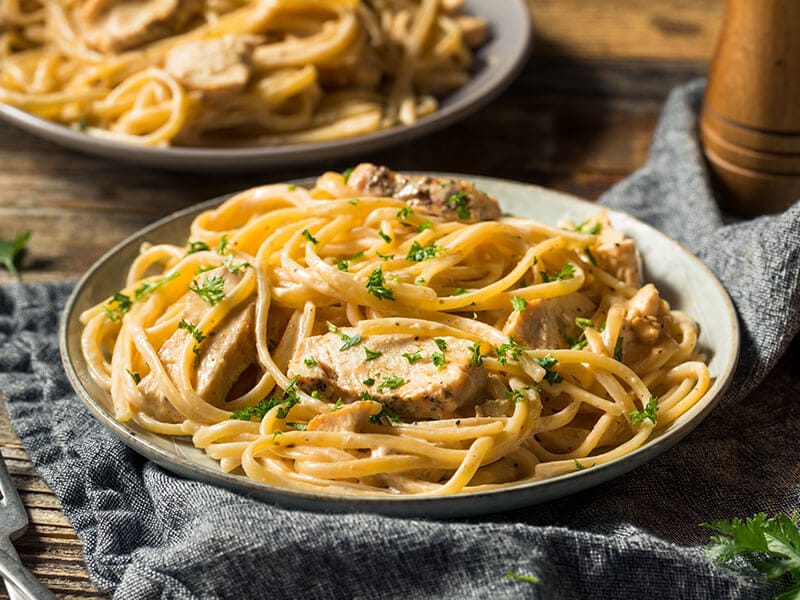
Fettuccine is a very common pasta variety in the Italian regions of Rome and Tuscany. Fettuccine alfredo, a specialty dish based on it, is considered one of the best Italian dishes and is popular in the United States.
The original recipe of the fettuccine alfredo combines fresh fettuccine with butter and cheese to create a creamy and delicious sauce. It has multiple variants throughout the world.
For instance, the American version of fettuccine alfredo is served with chicken or other meat, vegetables, and bread. Have you ever enjoyed fettuccine alfredo with a glass of wine? Try it, and you won’t regret it!
74. Frittata
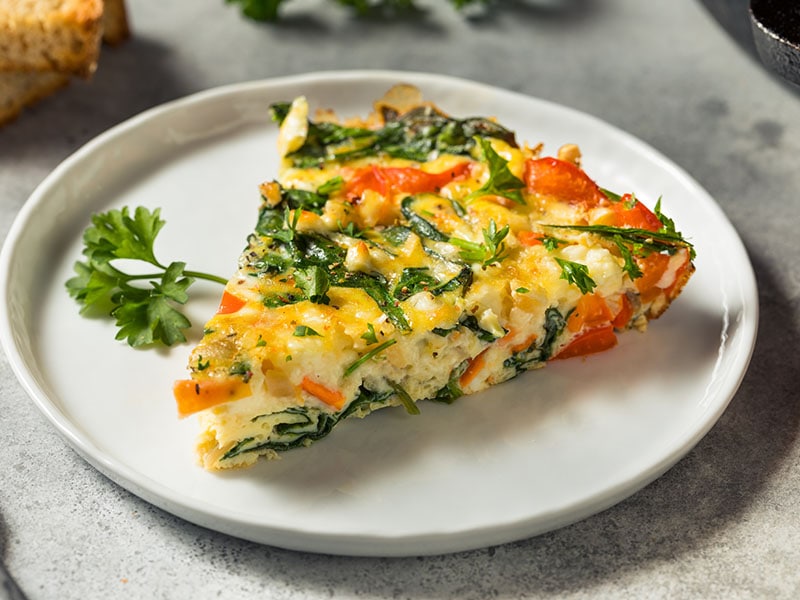
Frittata is a delicious and healthful breakfast staple from Italy. The name means “fried” in Italian. It is simply an omelet that contains vegetables (such as sliced zucchini, potatoes, chopped cabbages) and goes with meats, like bacon or chicken, and cheese.
You can use the skillet for cooking frittata until it turns brown, but make sure it looks the same for both sides. Alternatively, you can use an oven for this task.
75. French Toast

French toast is a popular dessert and breakfast food in many Western countries. It has been one of my favorite breakfasts since I was a child. I love it no matter how it is made, be it regular bread or artisan bread, and I bet you do, too.
It is a delicacy that consists of sliced fried bread that has already been soaked in eggs and milk. As for toppings, the possibilities are limitless. You can add powdered sugar, maple syrup, jam, honey, butter, whipping cream, or fruits.
Despite the name, the origin of this dish has nothing to do with France. Its history dates back to the ancient Roman era, and the modern version was probably created in America in the early 18th century.
76. Fried Chicken
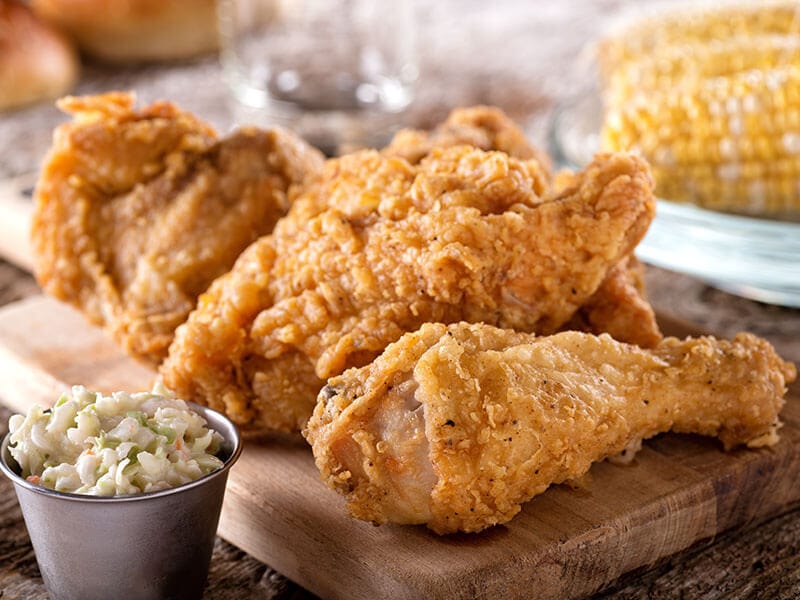
Fully known as Southern fried chicken, this beloved classic is all about the perfect balance of a crispy exterior and tender, juicy interior. To prepare it, you need to season chicken pieces (preferably from broiler chickens) carefully, coated them in flour or batter, and then fry them to perfection.
You can employ many methods to make this dish: pan-frying, deep-frying, pressure-frying, or air-frying. No utensils are needed to enjoy fried chicken: It is the ultimate hands-on food experience.
77. French Onion Soup
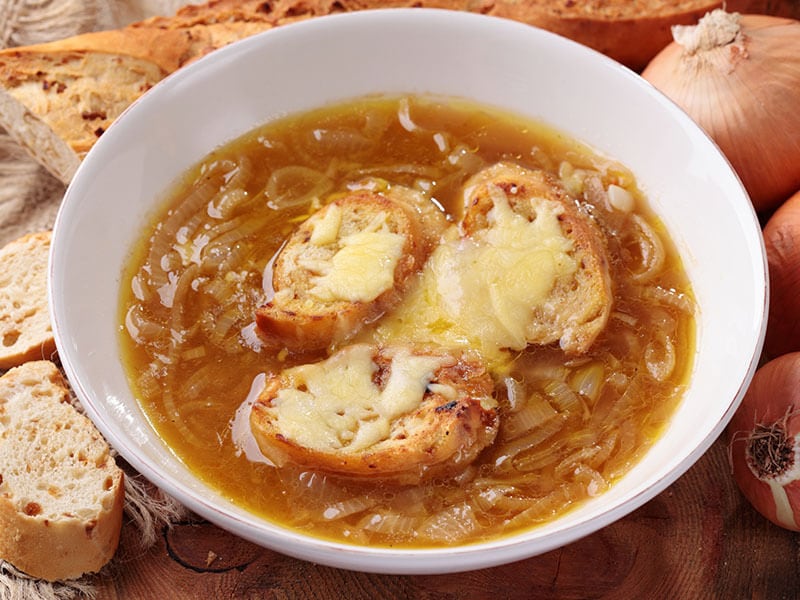
French onion soup, also known as soupe à l’oignon gratinée, is a timeless French classic. This savory blend of meat stock and onions has been around since Roman times. It is often served gratinéed, meaning that its traditional toppings are cheese-covered croutons or bread.
Whether you’re planning a romantic dinner for two or an elegant dinner party, this superb dish can serve as a standalone meal or a memorable entrée.
Cheese
78. Fontina Cheese
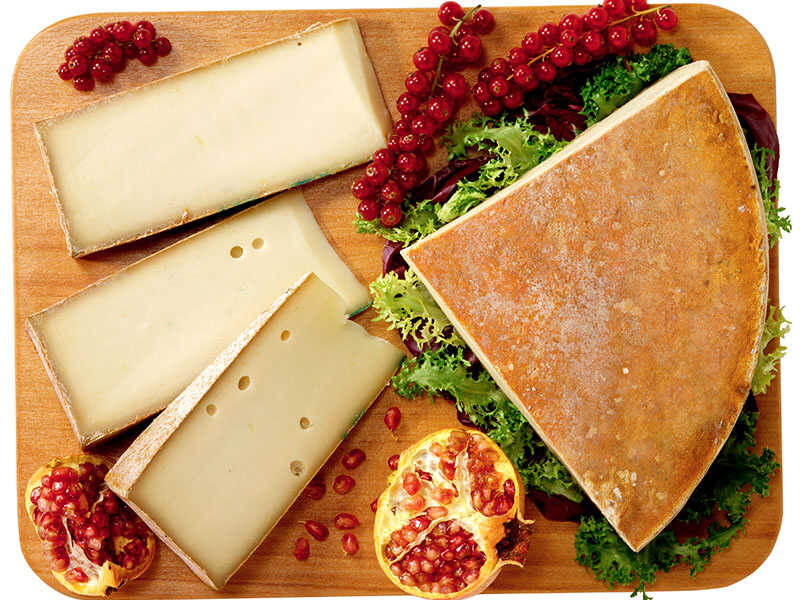
Hailing from Italy, fontina cheese is a delightful product of cow’s milk. This cheese has charmed tastebuds worldwide, making its way to countries like the US, Sweden, Denmark, Canada, Argentina, and France.
Its texture ranges from semi-soft to hard, and the flavor profile is pleasantly mild to medium-sharp. Fontina carries a milk fat content of around 45%, offering a distinctively nutty and savory taste. It pairs well with Nebbiolo wine.
While the Italian version is very robust, the varieties from Scandinavia and the US present a milder flavor and softer texture. Young Fontina makes an excellent choice for fondue, as seen in traditional dishes like Fonduta alla valdostana (from Italy) or Fondue à la valdôtaine (from France).
79. Fromage Blanc
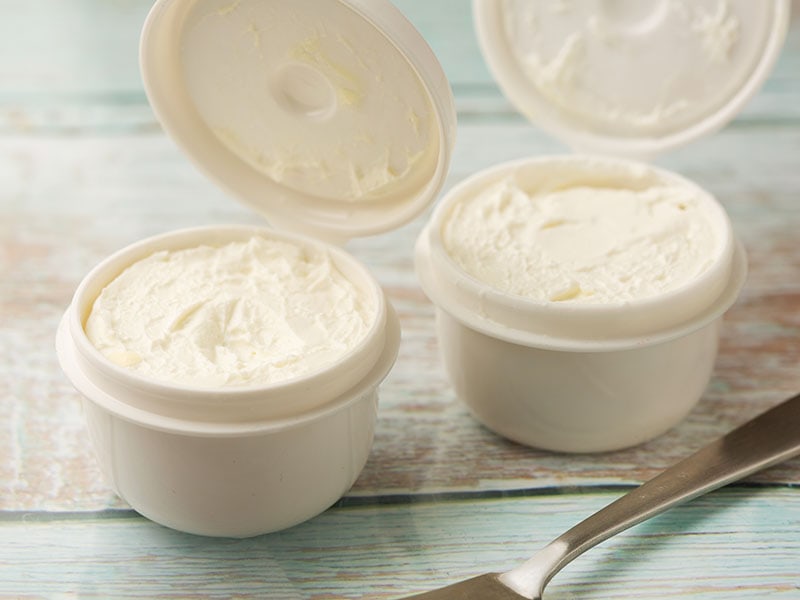
Fromage blanc, or ‘white cheese’ as its French name translates, is a creamy soft cheese with a semi-fluid, viscous paste. It has roots in northern France and southern Belgium. Also known by the moniker ‘maquée’, this fresh cheese is produced from whole or skimmed milk and cream.
You can use fromage blanc in many dishes, from a yogurt-like dessert with added fruit to a delicious spread on bread coupled with jam. This cheese also adds a unique flavor twist to savory dishes.
Fromage blanc shares supermarket shelf space with yogurts in many Western countries. Don’t mistake it for fromage frais. The difference? French law insists fromage frais contains live cultures at the point of sale, whereas with fromage blanc, fermentation is halted before that.
80. Fromage Frais
This light, creamy dairy product originated in France and Belgium. Created with either whole or skimmed milk and cream, it echoes the allure of cream cheese, but with fewer calories, less fat, and reduced cholesterol.
Like yogurt, fromage frais can become a delish dessert with added fruit or contribute its unique flavor to savory dishes. In restaurants, people like to pair it with honey to create a finger-licking dish known as fromage blanc au miel.
81. Feta Cheese
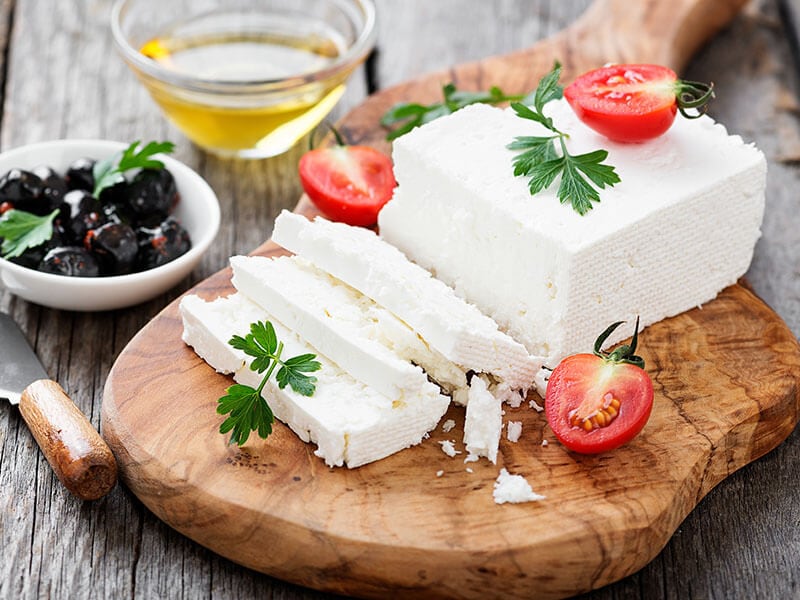
If you’re a fan of Greek cuisine or healthy eating, feta will be no stranger to you. This brined white cheese comes from sheep’s milk or a blend of sheep and goat’s milk. It has a soft, slightly grainy texture and crumbles with ease.
Feta cheese is brine-aged into large blocks, and its flavor profile dances between tangy, salty, mild, and sharp. You might find it in your sandwich, omelet, or grilled dish. You can also serve the cheese with olives, olive oil, and aromatic spices (such as oregano).
But the best part is that feta cheese is a low-calorie, low-fat cheese with an impressive amount of B vitamins, calcium, and phosphorus.
Other
82. Fusilli
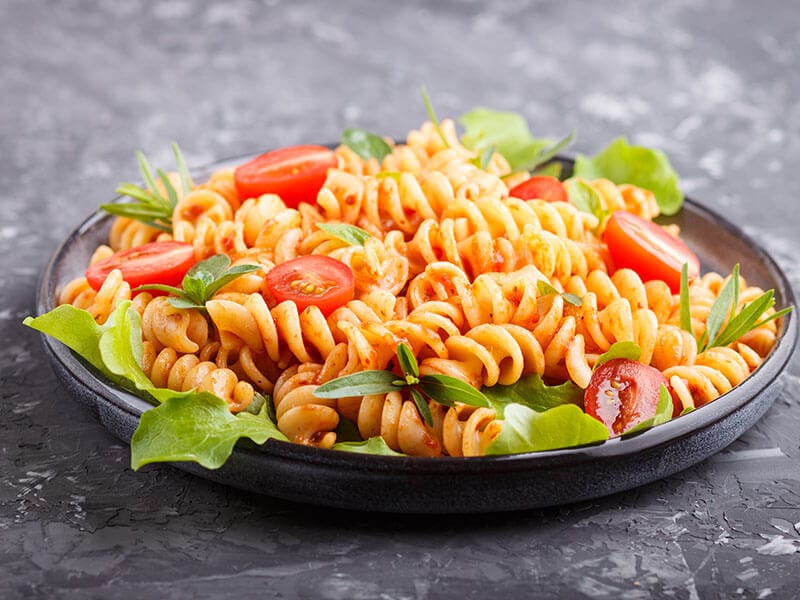
With a shape like a corkscrew, this pasta type owes its name to the word “fuso” meaning spindle. It can be either hollow or solid and made from plain or whole wheat.
Fusilli can come in many colors. With a dash of beetroot or tomato, you get red fusilli, spinach offers a green variant, and an adventurous touch of cuttlefish ink will turn it black.
83. Fadoola

A cold dessert from Mughlai cuisine, fadoola has its roots nestled deep in the Persian dish of faloodeh. It consists of vermicelli (made from wheat, arrowroot, cornstarch, or sago), rose syrup, sweet basil seeds, and milk.
This dessert carries a beautiful floral fragrance, combined with a sweet and tangy flavor resembling a milkshake. But what is really unique about Fadoola is its texture – the chewy vermicelli and basil seeds offer a wonderful contrast. Some even top it off with a scoop of ice cream.
84. Frappé Coffee

Frappé coffee, also known as Greek frappé or Nescafé frappé, is an iced coffee sensation from Greece. A Nescafe representative named Dimitris Vakondios crafted this chill brew in 1957 in Thessaloniki with instant coffee, water, sugar, and milk.
Over the years, it has grown to become a favorite beverage in Greece and Cyprus as well as a symbol of the vibrant Greek coffee culture.
FAQs
F For Fantastic: Try Those F-Foods!
So there you have it – an exploration into the intriguing world of “foods that start with F.” I hope this article has added many fantastic choices to your everyday meals. From exotic fruits to appetizing entrees from distant cuisines, there are many awesome dishes starting with the letter F!
If you’ve found this post intriguing, don’t keep it to yourself! Your friends will be very grateful if you share it with them. Leave your comment below if you have any questions to ask or ideas to contribute related to food with the letter F. Many thanks, and see you next time!
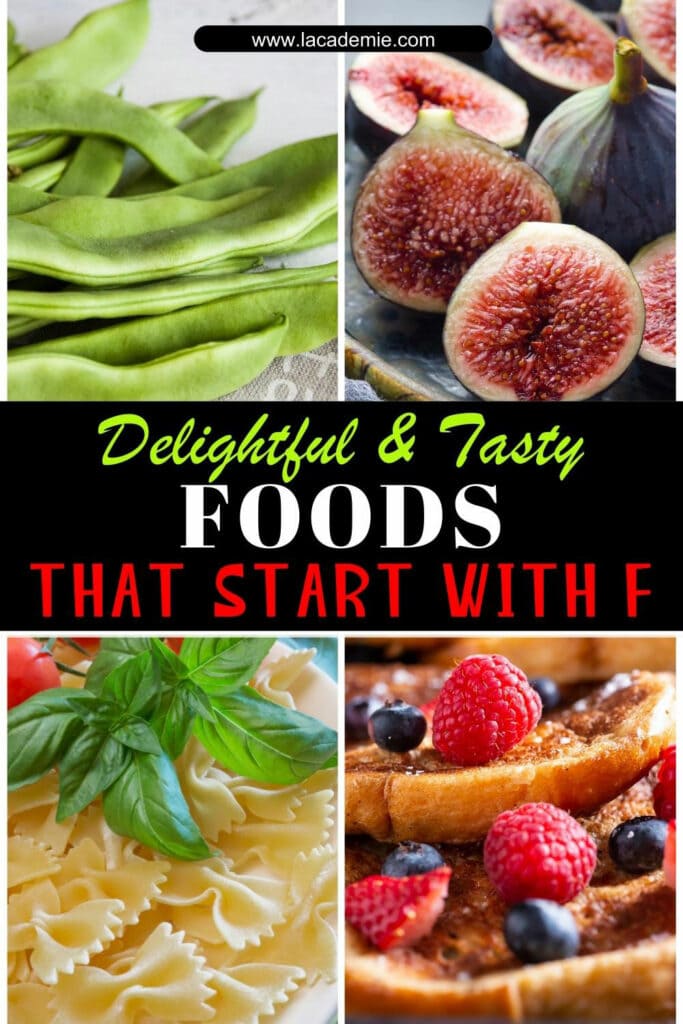
References
- Fiddlehead Ferns: How this unusual vegetable can benefit your health (no date) WebMD.
- Savage, G. and Vanhanen, L. (2018) Oxalate contents of raw, boiled, wok-fried and Pesto and juice made from fat hen (chenopodium album) leaves, Foods (Basel, Switzerland).
- Streit, L. (2018) 10 impressive health benefits of Fava Beans, Healthline.
- Boyce, H. (2022) 4 things you probably don’t know about fruitcake, The Detroit News.
- Kiprop, J. (2020) The world’s most common types of fish, WorldAtlas.
- (No date) Oehha.ca.gov.
- What are the health benefits of flounder? (no date) WebMD.

